The Sony A6000 Digital Camera Review by Steve Huff
Sony is back once again with a camera that may appear to be just like the previous NEX-6 but takes it to the next level with new branding (No more NEX name or Menu, this is the ALPHA 6000), a new more robust and square body, and a very good price. The new Alpha line came about when Sony released the A7 and A7r and renamed them from NEX to Alpha. With the NEX camera line, Sony always had loads of complaints that the menu..well..sucked. It sort of did. I even complained about it on a few occasions and said “why do they not just use the Alpha menu system”!?!? Well, now they do and it is so much nicer than the old NEX menu system. Much quicker, easier, and laid out better in every way. The last NEX, the NEX-6 was and is a great camera. Nice size, built-in EVF, good speed and finally, some great lenses for the system. The new A6000 kicks it up a notch and the result is Sony’s best APS-C NEX style body to date. This one is a screamer and a sleeper that many will pass up.
Before I get into the review and the images, let me state that I have had this body for 3 weeks, thanks to Sony sending me the review sample. So thank you Sony! If they did not send it I myself may have passed on reviewing it as I originally thought it was just another re-hash of the NEX cameras. While it is a rehash to some extent it is so much better than any NEX camera that if I were to offer an Editors Choice” or “Steve’s Pick”, this would be one of them. In the past I have reviewed all of the NEX cameras (almost) and you can see those reviews HERE at Mirrorless Central in the Sony section, the place where I archive all of my mirrorless reviews. BTW, This review will be of the shorter variety so I AM NOT re-hashing my reviews.
Most of what I felt of the NEX-5, NEX-7 and NEX-6 is the same with the A6000 because at its core and heart, it is still a NEX camera in design, in feel and in use. Basically we are getting the new menus, faster speed and the best IQ in a NEX type of camera to date. We also get the WiFi and camera apps but WiFi is in almost every camera today so it is a must for most companies to throw it in, and it works great here in the A6000. The apps are cool but I never use them as it slows me down too much. Some love them though. For me, the A6000 is a REAL camera that can offer someone wanting to step up from a P&S to professional quality images (with the right lens). It can also offer owners of the NEX cameras the new interface and the super fast speeds.
My biggest bang for the buck system of the year – The A600 and Zeiss Touit 32 1.8 – Under $1400 for the set. This one was shot at f/2.2 and is a JPEG from the camera. Click it to see it MUCH better. This impressed me, especially being a JPEG.
The A6000. What are the specs?
The best of the A6000 specs are below:
24.3MP Exmor APS HD CMOS Sensor and BIONZ X Image Processor – The latest processing power and the latest Sony APS-C sensor. Sony always leads the way in Sensor design IMO.
Fast Hybrid AF System – The Fast Hybrid AF system utilizes both a 179-point phase-detection system and 25-point contrast-detection system to achieve precise focus in as little as 0.06 sec. This system also provides AF tracking when shooting up to 11 fps in continuous high mode and functions seamlessly when recording full HD movies. In real world use, this camera is FAST. One of the most responsive cameras I have ever used. No slowness here. I remember the very 1st NEX-3 and NEX-5. They were so slow when compared to this new A6000. How things have improved.
There is also Eye AF! A detail-oriented focusing function that can prioritize a subject’s pupil and dedicate focusing performance on that for sharply rendered portraits; Lock-on AF is a dedicated focusing method for use with moving subjects and adjusts the target frame size as the subject moves throughout the image frame; AF area settings allow you to prioritize specific regions within the frame for increased accuracy; and AF-A (Automatic AF), AF-S (Single-shot AF), AF-C (Continuous AF), DMF (Direct Manual Focus), and Manual Focus modes can also be chosen.
Full HD Video Recording – Full HD 1080i/p video recording is supported at both 60 and 24 fps frame rates to produce high-resolution movies with a smooth, cinematic look. Full HD videos are recorded using the high-quality AVCHD codec, while 1440 x 1080 and 640 x 480 formats are also supported in the Internet-friendly MP4 format.
Body Design – The Tru-Finder 0.39″ 1,440k-dot OLED EVF features a refined optical system that integrates four double-sided aspherical elements to provide 100% frame coverage and a wide 33° viewing angle for clear edge-to-edge viewing. The electronic viewfinder’s design offers a true live view image, which is able to simulate the appearance of the finalized image prior to shooting and also avails focusing aids, such as MF Assist and the Peaking function. The 3.0″ 921k-dot rear Xtra Fine monitor is a larger alternative, suitable for making accurate compositions, reviewing imagery, and navigating the menu system. It features a tilting design that can tilt upward approximately 90° or downward 45° to benefit working from high and low angles. Additionally, WhiteMagic technology works to increase the overall brightness of the screen to better support use in bright or sunlit conditions.
Built-In Wi-Fi Connectivity
Additionally, PlayMemories Camera Apps are also supported via the built-in Wi-Fi connection, and allow you to personalize the camera’s features depending on specific shooting styles. Apps are available to suit creating portraits, detailed close-ups, sports, time lapse, motion shot, and other specific types of imagery.
Sony 16-50mm f/3.5-5.6 OSS Retractable Zoom Lens.
The Zeiss 32 1.8 on the A6000 is fantastic though the front bokeh can be a bit odd at times. Still, one of the best lenses i have used on a Sony camera. I was not a HUGE fan of the Touit 32 1.8 on the Fuji system but love it on the Sony.
My First thought on the A6000 after it arrived
When the A6000 box arrived I was thinking “Great, a variation of the old NEX-6..not exciting”. Then I took it out of the box and thought..“Damn! This is the best feeling and looking NEX style body ever”. Sony sent me the silver version and it looked pretty sharp. All I had was a kit zoom so I knew I had to try something better but even so, the kit zoom was doing great. I love the fact that the new 16-50 is so small and sleek when compared to the old long and fat 18-55. Yes, these Sony’s are getting better and better with each release. The best part about the A6000 kit is the price. Coming in at $798 for the camera body AND kit zoom, it makes me feel dirty to recommend other APS-C cameras that cost more because the A6000 is so good in so many ways. It is a little on the lightweight side but feels just as good in build, if not a little better, than the Fuji offerings. So again, good bang for the buck.
I looked the body over and remembered I also had that Mitakon 50 0.95 and it was a native E mount lens! Why not slap it on and give it a try? I did just that and the snapshots I snapped with it are below (all were at f/0.95), as well as a look at the A6000 with the lens attached:
The combo of A6000 and the Mitakon ROCKED! Not as good as it was with the A7 but it was nice to have that shallow DOF and a super fast WELL MADE lens on the camera. It felt solid, it inspired confidence and for me, was easy to focus just using the EVF. While not a perfect lens (it has some odd Bokeh qualities) at $799 it gives you a taste of those super shallow DOF lenses like the Leica Noctilux that comes in at $11,000. While I feel the Sony 55 1.8 or Zeiss 32 1.8 are overall better choices if you are only going to have one lens, the Mitakon is great if you want to add some artistic flair to your photos. The thing is a beast of a lens and well worth the $799.
With more use of the A6000 I started to realize that this camera was actually pretty special. For under $800 I was seeing the fastest response of any camera in recent memory (mirror less). The response, the AF and even the shutter were fast and gave me an actual sense of speed while using it. Like AIM, FIRE, FIRE – BAM! Done! As I said I have reviewed nearly all Sony NEX cameras and while the A6000 is VERY similar to all of them in many ways, it is the most responsive in all areas without question.
Oops, they did it again! But no biggie.
After looking through the box more I realized that Oops, Sony did it again. No external dedicated battery charger. This time I will forgive them though as for $798 (yes I keep relating the price because it is such a value) they could not have given it all. If this camera were $1200 I would have been upset at the fact that all we get is a USB cable to charge while the battery sits in the camera. At $798, it is fine. You can buy an external charger for Sony batteries at Amazon for cheap, so no big deal. Look at this crazy deal. For $19.99, and using Amazon prime, you can get a dedicated charger and extra battery. Yes, a battery and charger for under $20. SNAG IT if you have an A6000 or A7 as they use the same battery.
The Kit Zoom is pretty nice.
Usually I am not too fond of the kit zoom’s that are included with camera kits. They are usually slow, soft and cheap in build. The A6000 includes the better Sony Kit Zoom, which is the 16-50 OSS lens that normally sells for $350 on its own. Some people are not a fan of it but I happen to think it does great on the A6000. If you have light and need the versatility that a zoom offers, it is a great lens and gets the job done. I used it while walking around rural areas in Southern Illinois with my Mother over Mothers Day and it did great.
These are all OOC JPEGS using the kit zoom and A6000. Click them for larger! 1st two shot by Brandon.
So while I am still not a fan of zoom lenses (I prefer primes) the kit zoom is actually a nice and small little lens. Not perfect, not high end, not anything giving a WOW factor but when it is included in a camera of this price it is very nice indeed. The color is very nice right from the camera as well, which is not the case with many of the cameras that are even priced into the thousands.
The need for MORE speed!
The Sony A6000 is a monster in the speed department. It can shoot 11 frames per second and due to its crazy focus points covering 92% of the sensor, it is uber fast. It has contrast and phase detect AF, which in laymen’s terms means IT IS FAST. When I was shooting with the bundled kit lens the camera was lightning fast. I shot the camera in all kinds of light and never once had an issue with Auto Focus. As i mentioned earlier, I do not remember any other camera being this fast. It is faster than my old fave, the Nikon V1..faster than ANY other Sony to date (much quicker than the A7 flagship) and faster than any Fuji. I think it even edged out my Olympus E-M1 which has been my benchmark for speed and response. While the Sony system does not offer the lenses that Micro 4/3 does, nor does the A6000 offer the build and features of the E-M1…it is up there and maybe faster in the speed department.
Sony also excels here with focus tracking. If you want to shoot sports or action, this is probably the best mirror less to date to do just that. In fact, I know it is. So I will say it clearly: In May of 2014, the A6000 is the best mirror less camera for tracking moving subjects as well as overall speed.
An APS-C sensor that is super fast, responsive and has amazing AF? Yep, that has finally become a reality in the Sony A6000. Every year cameras get faster and add more features. Sometimes they are not really worth the upgrade and sometimes they are. If you value speed and an APS-C sensor, you MUST try the A6000.
All three images below were shot as JPEG using the Zeiss 32 1.8 Touit lens. The 1st one was converted to B&W using Alien Skin. STILL my fave filters!
Overall Image Quality
I knew from the get go that the A6000 would have excellent IQ. I mean, would Sony release this camera with anything but at least as good of IQ as the older NEX-6? No. In fact, I feel it surpasses any NEX to date for IQ and I am just talking about JPEGS! The JPEG quality from the A6000 is fantastic. I shot this camera as a JPEG shooter to make it more challenging and to see what kind of color and quality would come out. I was surprised as every JPEG I looked at was sharp (though would be better and cleaner with RAW), clear and with pleasing color. The A6000 has the same color modes as previous NEX cameras so you have the usual Standard, Vivid, Nutral, Clear, Light, etc. While I feel they should drop 75% of those and just concentrate on the core color modes, the Sony’s always offer all kinds of gimmicks and things to try. Still here is the Sweep Panorama mode, the Intelligent Auto and the Picture Effects, none of which I ever use. For me, just give me Aperture Priority and a good Auto ISO and I am off to the races.
As for JPEG shooting, below are a couple of direct from camera JPEGS. You can right-click on them to open them in a new window and see the full size file. Both were shot with the A6000 and Zeiss Touit 32 1.8.
High ISO and low light. Is it any better than previous models?
High ISO on the A600 is excellent as one would expect. Today we should not have to worry about ISO capabilities of modern-day cameras as they give us so much more in this area than film ever did. EVER. We can shoot clean with many cameras right up to ISO 3200, some even 6400. With the new Sony A7s coming soon we can go to levels we would have ever thought possible in our lifetime just a few years ago. So shooting the A6000 in low light with higher ISO is as good as one would expect but below is some ISO crops from 1600 and up.
The A6000 has very good high ISO performance all the way up to 6400 ISO, which is all anyone would really ever need. I mean, how many of you shoot past ISO 1600 on a regular basis? The test image below was shot in my office with natural light coming in through slightly open blinds. Noise Reduction was turned off 100% in camera and what you see below is all OOC JPEG.
Bottom line, the ISO capability rocks on the A6000 but then again, Sony has always been good at this. You can see the detail at 6400 and it gets lost at 12,800 so 6400 is as high as I would want to go.
The Test Image
–
The Crops
A Crazy JPEG Comparison! The A6000 and Zeiss 32 1.8 Touit vs the Leica M and 50 Summicron APO
Ok, here we go. I was not going to do this but I had to! I mean, I have in my possession the A600 and Zeiss Touuit 32 1,8 which gives us a 50mm full frame equivalent. The Zeiss Touit lens and A600 come in at under $1400 TOTAL, FOR BOTH! I also have the Leica M 240 and Leica 50 Summicron APO. This kit comes in at OVER $14,000! 10X the cost of the Sony combo. YES, you read that right. $14,000! So how do they do against each other in pure IMAGE QUALITY results only? Judge for yourself. But before I show you I want to state that shooting these cameras is 100% different as is the build and camera construction quality. As you would expect the Leica is in another stratosphere when it comes to build, feel and quality of the camera itself. It is also a rangefinder. The ONLY digital rangefinder available today. It is a unique experience and it is a Leica. With that said, when looking at Image Quality ONLY, the little Sony A6000 is quite good. 😉 Take a look. IMO, IQ alone does not warrant 10X the cost here. Not even close, and I love and adore my Leica system. Yes the Leica is better but $13k better? Nope.
THIS IS AN OOC JPEG COMPARISON! What it shows is that the JPEG out of the Sony is fantastic. It is average out of the Leica.
Things I did not like about the A6000?
There are only a couple of things I did not like about the A6000, and they were not major dealbrakers in any way. For the under $800 cost (with lens) of the A6000, I really have ZERO complaints. It is a mature system camera and when you attach a great lens it will reward you with good color, great IQ and detail and uber fast operation. I would have liked it to be a little more solid in feel..maybe even a pro version with waterproofing and a more robust feel. I would have loved to have a better EVF like the one Sony offers externally for the RX1 camera. The problem is that my wishes would have propelled the cost of the camera to $1300 and up. The beauty of the A6000 is the fact that it allows us to get into a mature system camera that has it all. Speed, nice build and design, great lenses, built-in flash and EVF, swivel LCD, good battery life, innovative features such as Eye Af and great face recognition AF. It has the best tracking of any mirrorless to date as well. All for under $800 with a nice (normally $350) kit zoom. I mean, for those looking for a new camera under $1000 the Sony A6000 MUST be looked at! Small size is the key for me.
So at the end of the day I really can not fault the A6000 because for the cost of admission it offers way more than it should.
Pros and Cons of the Sony A6000
Pros
- The price! Under $800 for camera and lens – MASSIVE Bang for the Buck.
- The sensor is fantastic with awesome color and detail.
- JPEGS are very good. Better than most camera.
- Fast AF and Response. Fastest in the mirror less world right now.
- Nice design and look to the camera.
- Built in EVF is always nice to have, and the A600 has one
- Tilt LCD
- Great high ISO performance
- Kit Lens is quite nice
- Small size and light weight
- Built in flash for those who like that sort of thing
- All new Alpha menu!
- Retains the gimmicky modes
- Nice control and customization
- Can use many lenses via adapters
- Good at AF tracking
- High ISO Noise Reduction can be turned off 100%! (which is good)
Cons
- No weather sealing
- No in body Image Stabilization
- EVF could be better
So there thou go. For me, 16 pros and 3 cons. This is after 3 weeks of use, which was not daily use but 3-4 times per week.
The OOC color can be gorgeous! Rich, beautiful color and tones. Zeiss 32 1.8 Touit.
–
and B&W is also nice! Once again, the awesome Touit 32 1.8
My Bottom Line conclusion of the A6000
To be honest I was not incredibly excited to review this camera. Why? Well, when I review a camera I do not just go through the motions nor do I have any kind of template that I use. Some reviews I do are more detailed, some are more exciting and some are short and sweet. ALL are based in real world use with the camera and never do I get technical or talk nerd talk. I simply use the camera and if it excited me you will know by the way I write (see an example of that here) and if I do not like it, you will know (an example here). Sometimes though I am surprised by what I think will be average or mediocre when it turns out to be much better than I expected. The Sony A6000 is an example of just that. I thought it would just be an average NEX-6 update with new Alpha menus. But as is the case on many occasions, I was once again wrong!
While I am not raving about how it is the best thing since sliced bread, I am very happy with the camera and feel it is indeed the best APS-C NEX type of camera to date and one of the best if not the best APS-C cameras available. I prefer it to most Fuji’s (besides the X-T1, slightly) and prefer it to any other APS-C Sony and almost every other APS-C camera. I have to keep reminding myself that this camera is only $798 with a lens as when you use it seems to perform and feel like a $1200 and up camera.
Sony did good with the A6000. Those who never shot a Sony and those who own something like NEX-5, NEX-6 or even NEX-7 would be thrilled with the A6000. If I spent even more time with it I may have even fallen harder for it and ordered one. It truly does give outstanding performance and speed all in one small nice looking package. I review and use so many cameras each and every year it is easy to get a little burn out with cameras and new products but the A6000 is one of those cameras that makes os much sense on many levels and is fun to shoot, so it made me want to head out with it every time I took it out.
This is an important price point and Sony knows it, so it will appeal to a much wider audience than the over $1000 enthusiast cameras. I think if the A6000 was shown to a group of 50 people who were in the market for an under $1000 camera system, and they were able to use it for an hour, I feel that 40 would buy it on the spot (if they were in the market and ready to buy).
The only faults are with the smaller EVF, no touchscreen, no in body IS and no weather sealing. But add those and it will add to the price so in reality, when judging the A6000 at the current price point it has no flaws at all.
The Sony A6000 is one small step for camera fan and one giant leap for the masses who really do not follow the camera world or care about sensors and tech. By that I mean that ANYONE who takes pictures would be thrilled with this mid range offering from Sony. It does what it does extremely well and all you have to worry about is what lens you want to attach.
Speaking of lenses, I really enjoyed the Zeiss Touit for its rich color and nice overall rendering. At under $800 it is a fabulous lens that will give you the 50mm focal length equivalent and some nice shallow depth of field effects. If I owned the A6000 I would also own the Zeiss. The Mitakon 50 0.95 is also unique and built like a classic Leica lens in feel and the solidness of it. The Mitakon is manual focus only though so beware of that. At $799 it offers a more artistic approach in use and results. You can read about the Mitakon HERE. Sony now has many lenses available for the E-Mount. From zooms to primes to expensive to cheap. Take your pic.
Bottom Line? If I offered an “Editor’s Choice” the A6000 would take that title easily. Highly Recommended for those looking for a quality camera with DSLR quality and speed without the size. Also good to note is that during the review period I never had a mis focused shot or any issues at all with the camera. When I snapped I knew what would come out of the camera would be fantastic.
Where to Buy?
You can buy the Sony A6000 at my recommended and preferred dealers below. Just click the link to go direct to the A6000 page to check stock status, price and to order if you so desire!
Amazon – Sony A6000 in BLACK or SILVER with Kit Zoom.
Amazon – Sony A600 in BLACK or SIlVER without Kit Zoom.
B&H Photo – All variations of the A6000 are HERE!
Zeiss Touit 32 1.8 Lens for Sony E-Mount at Amazon or B&H Photo
SMILE!
PLEASE! I NEED YOUR HELP TO KEEP THIS WEBSITE RUNNING, IT IS SO EASY AND FREEE for you to HELP OUT!
Hello to all! For the past 5 years I have been running this website and it has grown to beyond my wildest dreams. Some days this very website has over 200,000 visitors and because of this I need and use superfast web servers to host the site. Running this site costs quite a bit of cash every single month and on top of that, I work full-time 60+ hours a week on it each and every single day of the week (I received 200-300 emails a DAY). Because of this, I need YOUR help to cover my costs for this free information that is provided on a daily basis.
To help out it is simple.
If you ever decide to make a purchase from B&H Photo or Amazon, for ANYTHING, even diapers..you can help me without spending a penny to do so. If you use my links to make your purchase (when you click a link here and it takes you to B&H or Amazon, that is using my links as once there you can buy anything and I will get a teeny small credit) you will in turn be helping this site to keep on going and keep on growing.
Not only do I spend money on fast hosting but I also spend it on cameras to buy to review, lenses to review, bags to review, gas and travel, and a slew of other things. You would be amazed at what it costs me just to maintain this website. Many times I give away these items in contests to help give back you all of YOU.
So all I ask is that if you find the free info on this website useful AND you ever need to make a purchase at B&H Photo or Amazon, just use the links below. You can even bookmark the Amazon link and use it anytime you buy something. It costs you nothing extra but will provide me and this site with a dollar or two to keep on trucking along.
AMAZON LINK (you can bookmark this one)
B&H PHOTO LINK – (not bookmark able) Can also use my search bar on the right side or links within reviews, anytime.
You can also follow me on Facebook, Twitter, Google + or YouTube. 😉
One other way to help is by donation. If you want to donate to this site, any amount you choose, even $5, you can do so using the paypal link HERE and enter in your donation amount. All donations help to keep this site going and growing!![]() I do not charge any member fees so your donations go a long way to keeping this site loaded with useful content. Thank you!
I do not charge any member fees so your donations go a long way to keeping this site loaded with useful content. Thank you!
A few more images from the A6000! Enjoy and THANK YOU for reading!
–

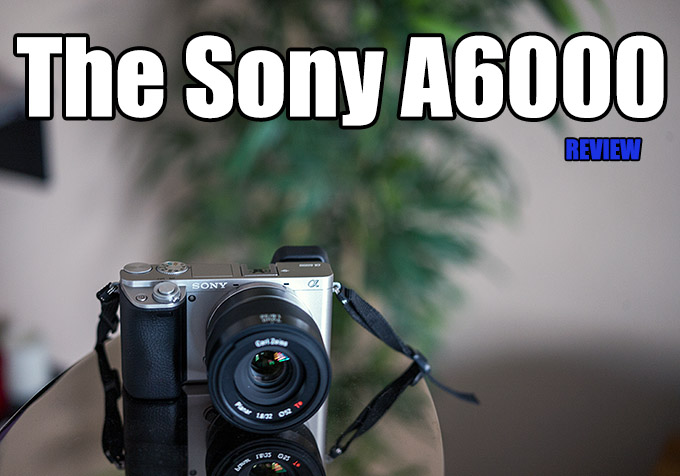
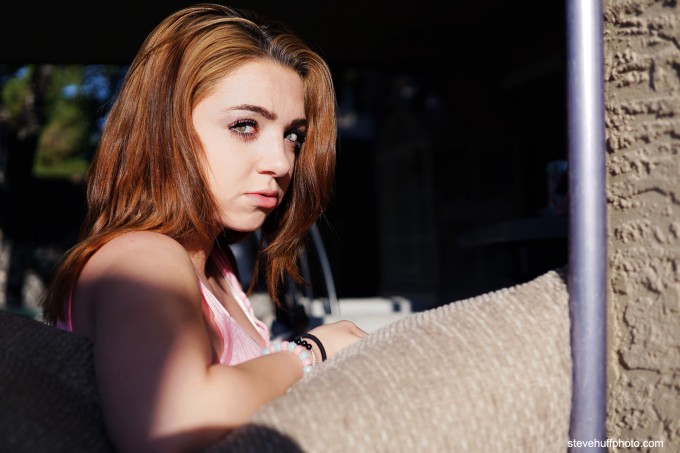
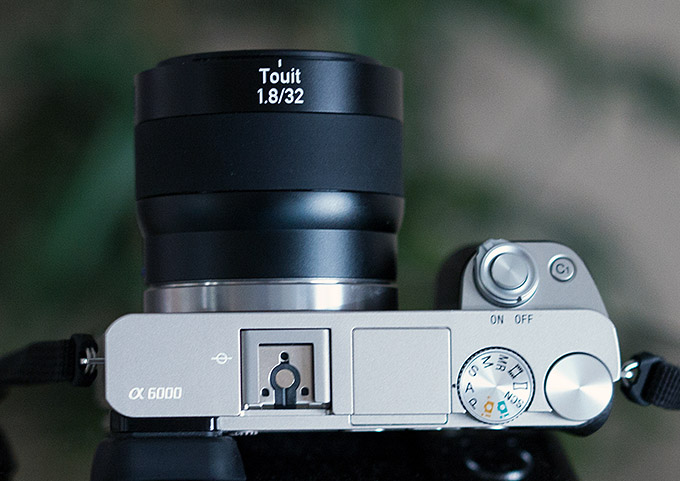
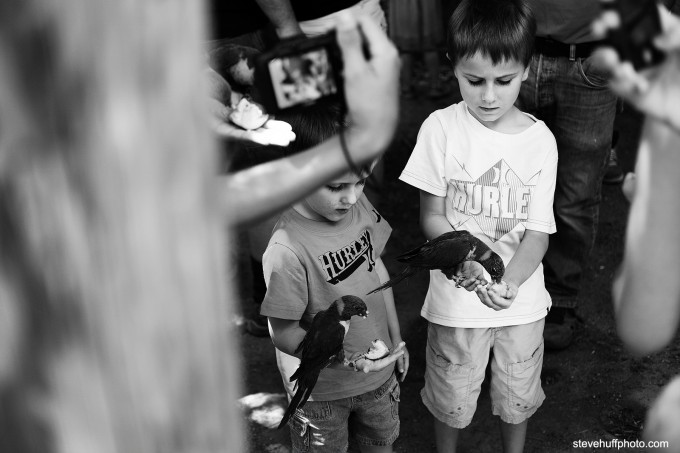
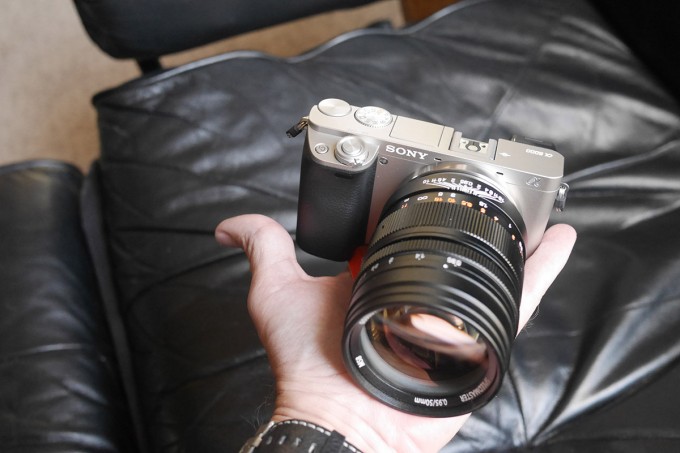
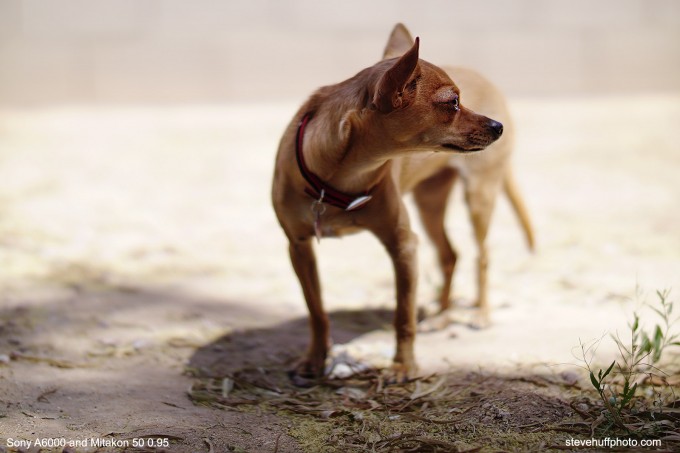
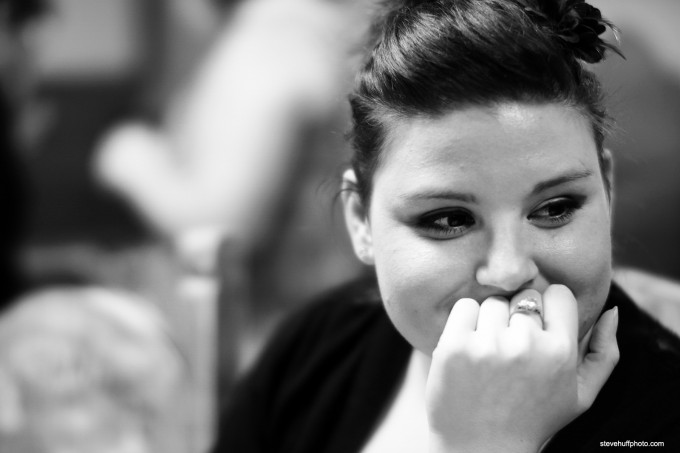


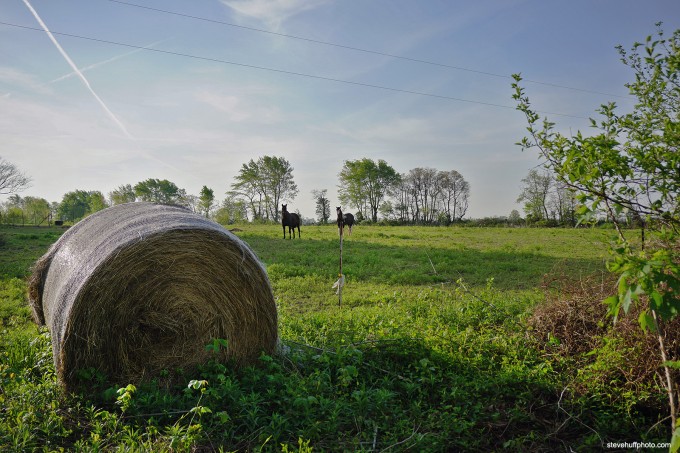
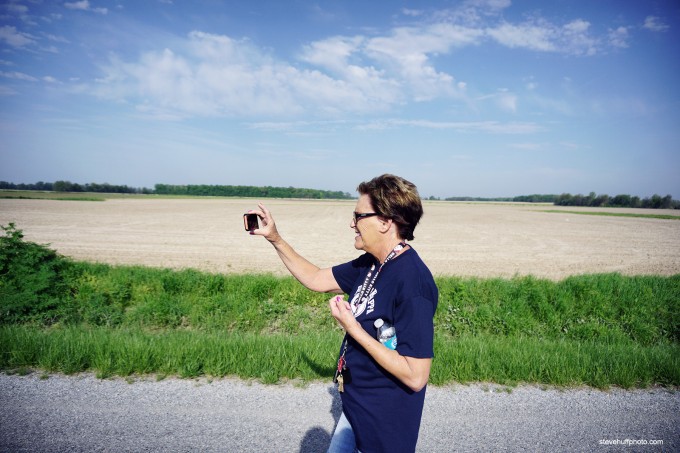
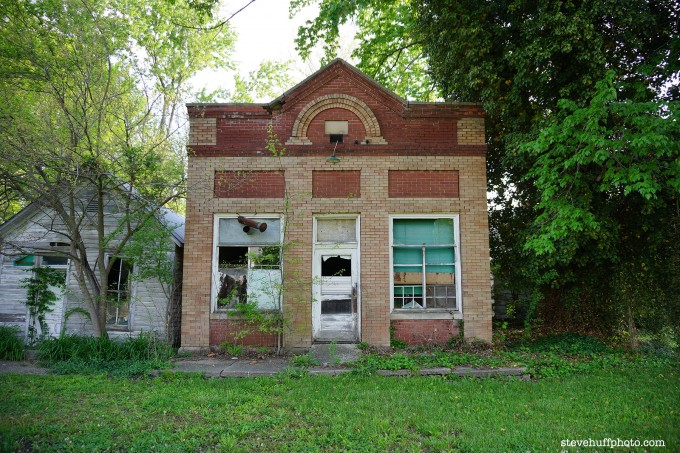
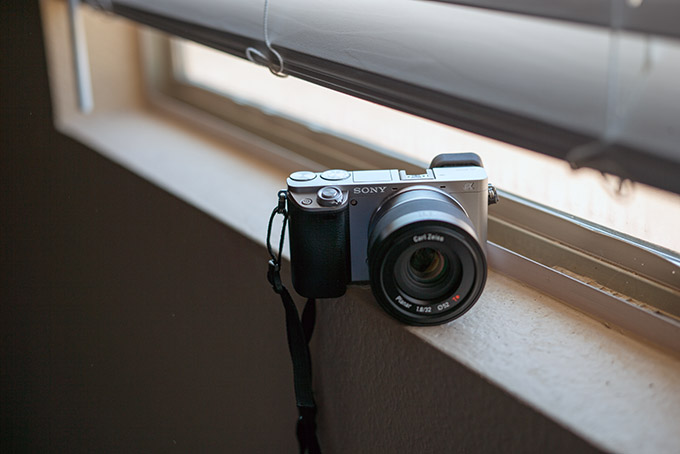
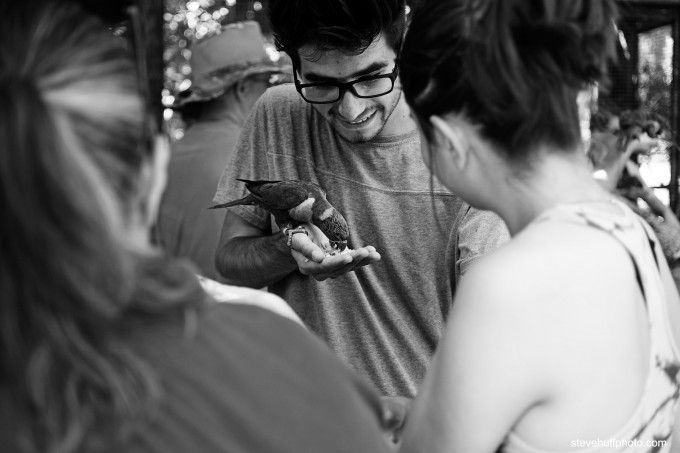
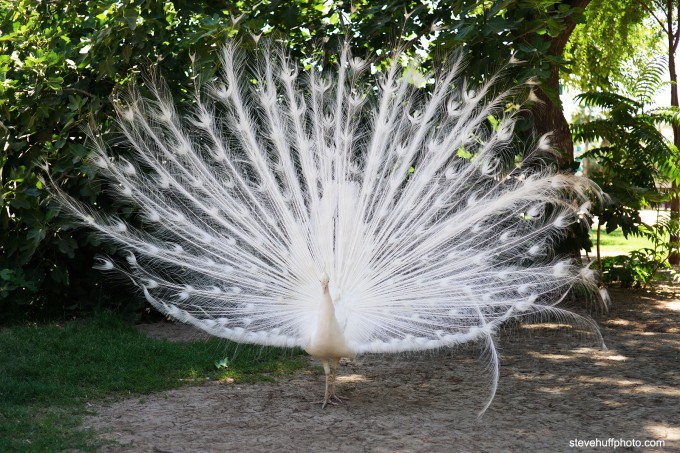
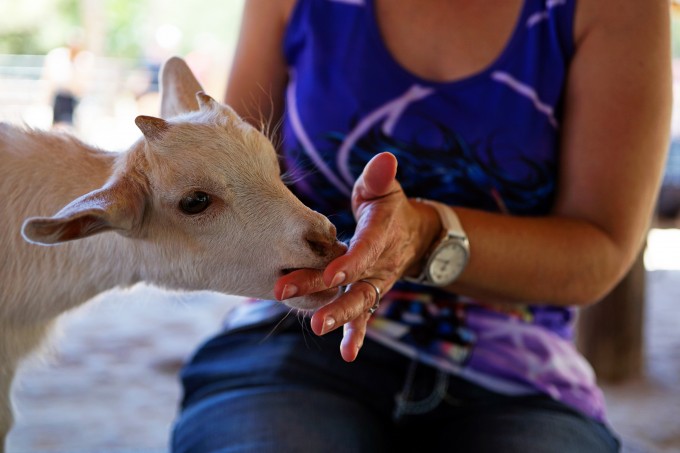
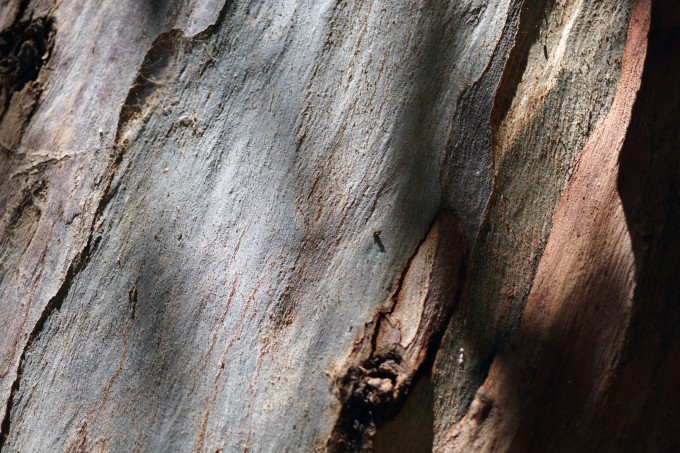

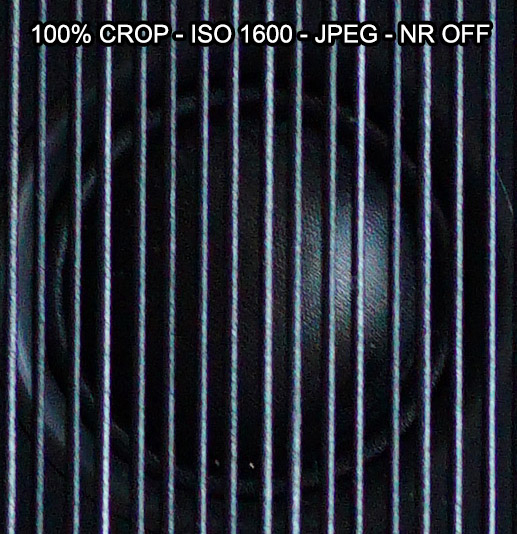

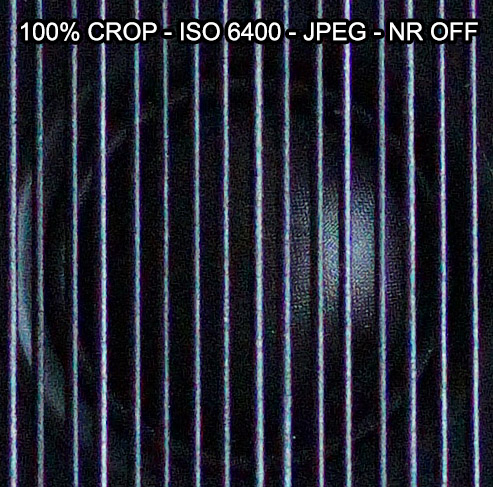
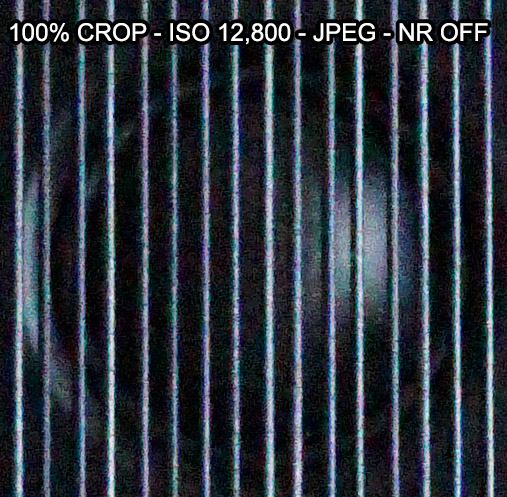
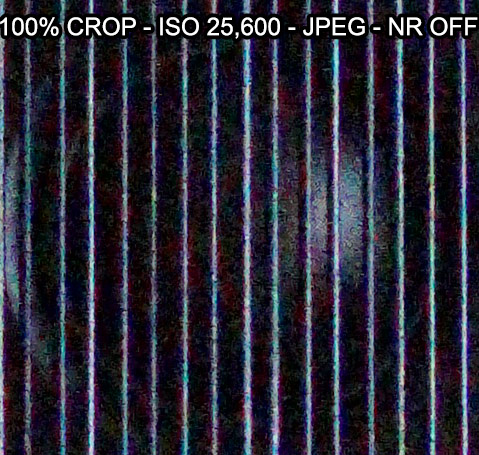
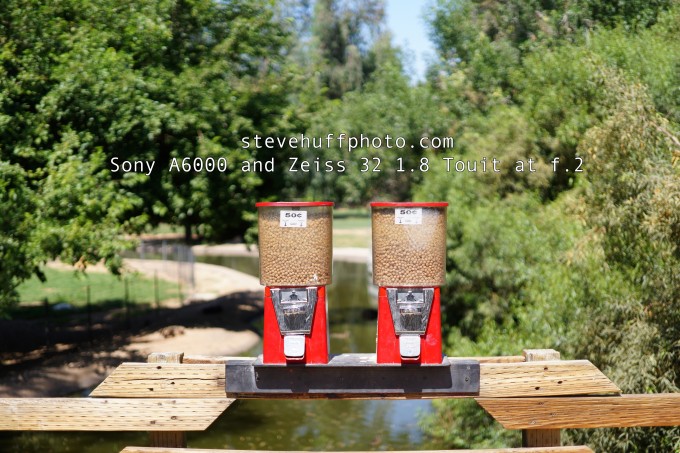
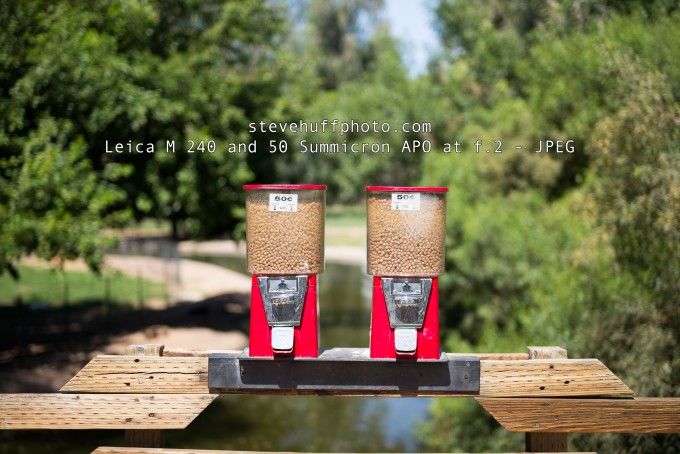
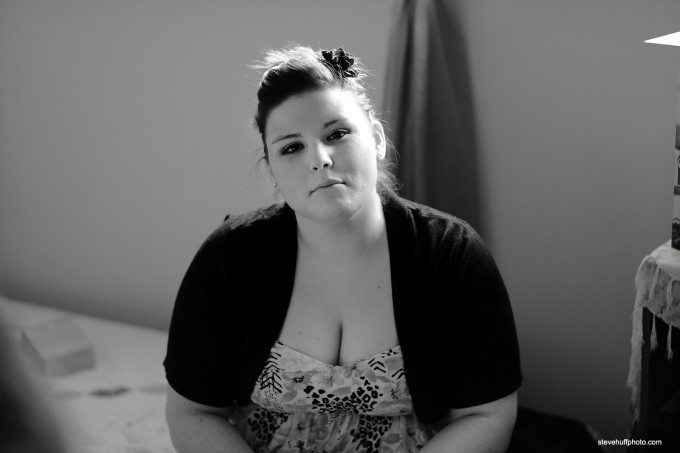
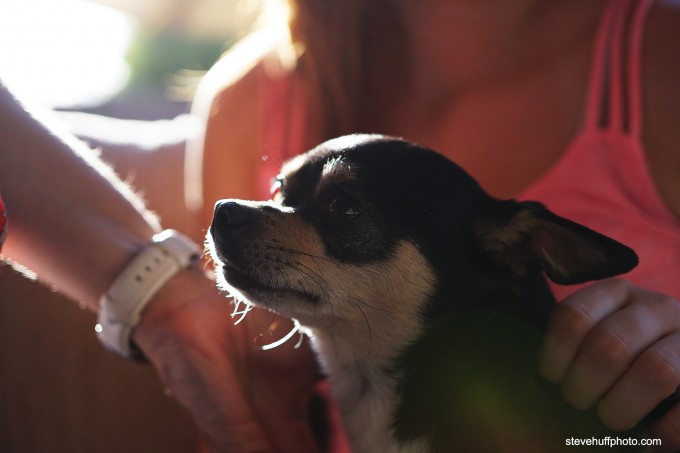
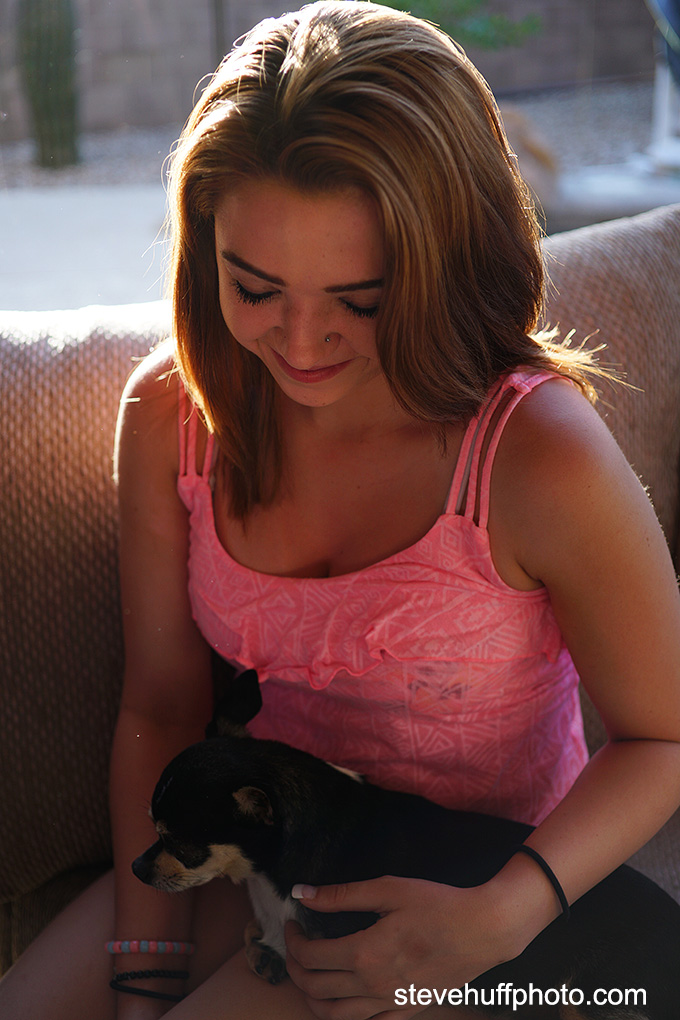
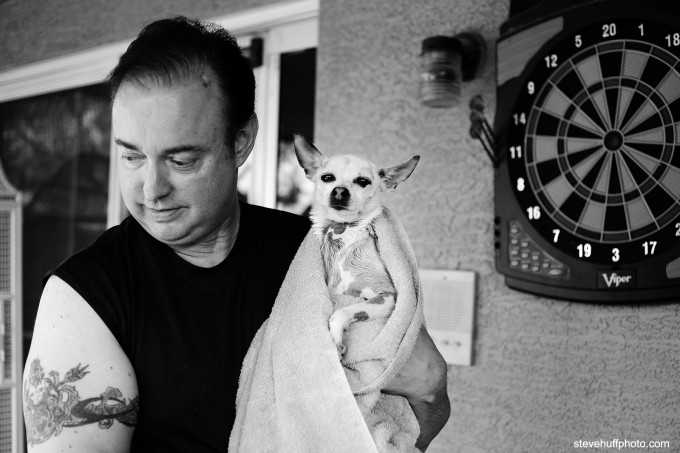

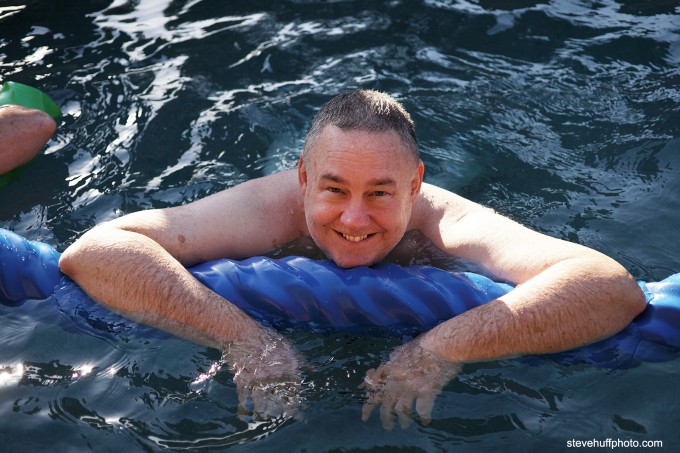
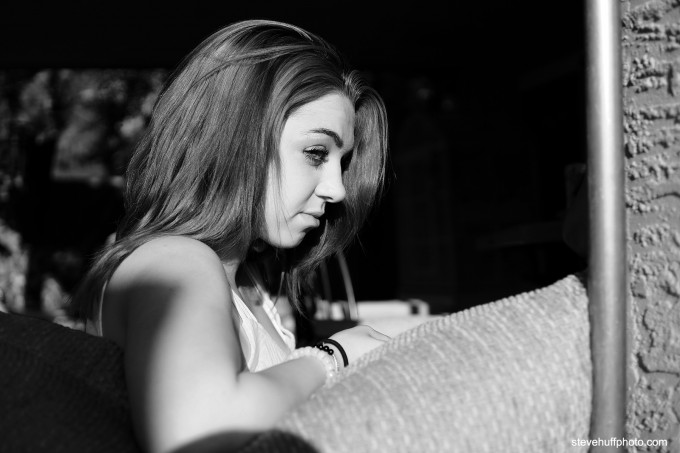
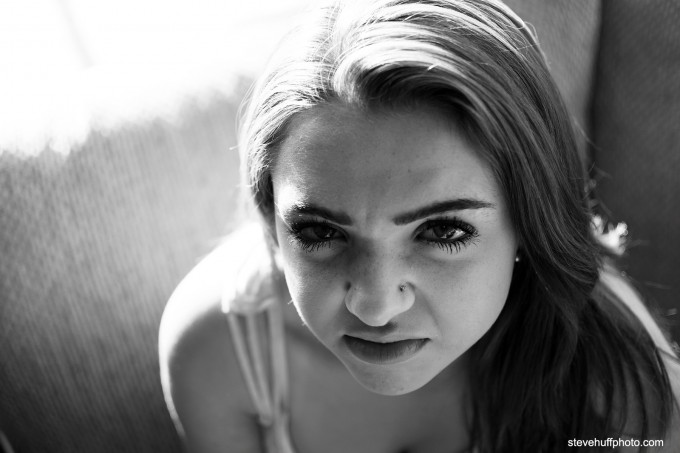
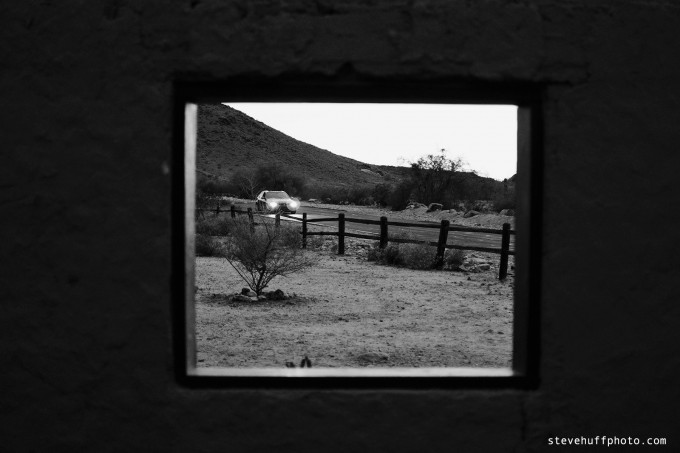
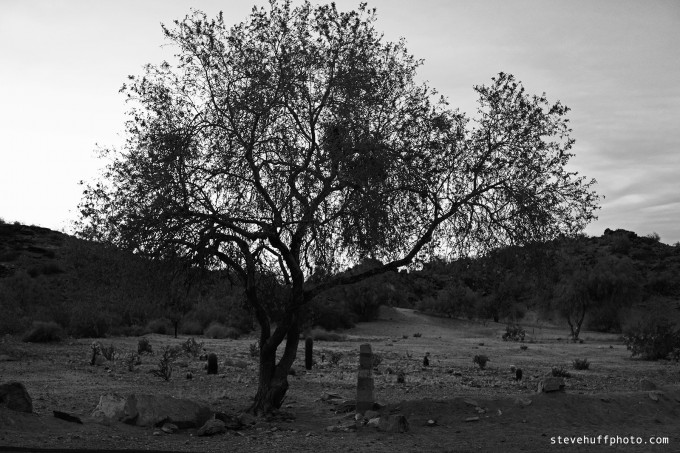

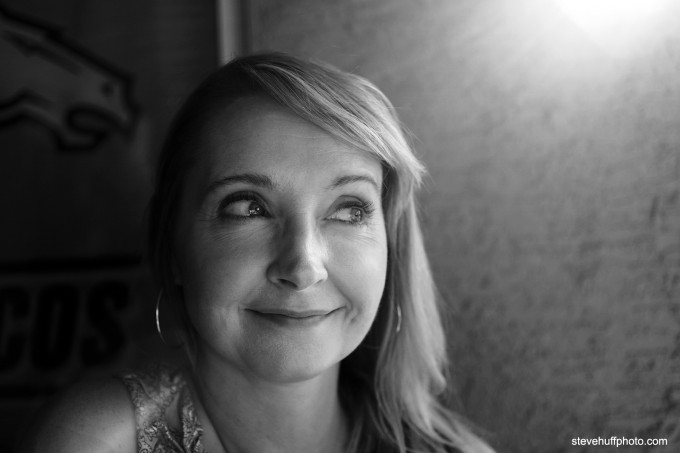


Thought-provoking commentary , I learned a lot from the points . Does anyone know where I might get ahold of a fillable HUD-GFE version to fill in ?
I just ran across an A6000 package today with 2 lenses for $699. Can’t remember both lenses. One is a 55-210. I have a Nikon V1 that I want to sell and move to something different and this looked like a good option. Also thinking on a Pen F.
Steve (or any other camera expert), say you have $750 to spend on a camera (pre-lenses). At this point, what do you choose? Both the PEN-F and the a6300 are a bit out of the budget. a6000 still the best budget choice or have others caught up? Looking to take vacation/hiking pics, sports action shots, kids, playing, etc. Would love to have decent video.
$750 and under…
A6000 is a fantastic choice, but if using a kit lens look at the E-M10 II as well for better OOC images. Its small, quick, has great features, built in IS, and so many great lenses you can get for a great price. The A6000 is also nice of course, but all depends on the lenses being used. The best quality from any of these will depend on the lens used and I feel Olympus kit zooms are better than Sony kit zooms.
I’m no expert but I just bought the A6300 and it’s amazing.
Hey Steve! Do you have a more updated recommendation, that is comparable to this camera (since this review is a few years old)? Is the current Sony Alpha a6000, still as good and reliable? Thanks!
Its still a great camera but the new A6300 is now out there…so that one will be better. But the A6000 is still capable. To be honest, Id take a PEN-F over a 6000 or 6300 simply due to the amazing and small lenses available with M 4/3 and the beautiful design and body and features/IQ.
Hi steve
I have the A6000 and I would say that i mostly take portrait type photos of my family and children with the occasional travel photography, for travel i have the zeiss 16-70mm, which i love, but for portraits do you think that the new 85mm batis would be better or overkill for the A6000, I’ve looked at the 50mm f1.8 and 55mm zeiss but im thinking that the batis 85mm will give me a better focal length for portraits but because its only aps-c would it be a BIG waste of money on the A6000
Hi Steve, awesome site! It is a perfect resource for amateurs like me. The A6000 sounds great but how do you think would it perform for night photography? I am looking for a decent mirrorless camera to bring to Iceland in place of my slr. Would you recommend it for Northern lights photography or do you think I should just stick to my slr for this purpose? I would really prefer the less bulky A6000 as we plan to hike for most of the trip. Thanks in advance!
It’s an awesome camera, I love mine. If you wait just a bit it’s successor should be announced. You could get an A6000 cheaper or the newer presumably better version.
Thanks! I was thinking that too but I am not sure the new version will be out by March when we leave. Looks like Sony has kept postponing its launch. Right now I am leaning towards the a6000 but do not know if it is good enough for Northern Lights photography. If it is not, I may have to shell out the extra $ and get the a7 or just bring my slr with me.
I’ve been anxiously waiting for the new release. The 6000 was on sale all they the holidays and went back to the normal price at the 1st of the year. But over the weekend, I noticed my local Sams Club had a bundle that included the 6000 body, normal kit lens, the 55-210 zoom and a Sony bag for somewhere between $850-$900. While more than the sales prices I saw a month ago, this is still a decent buy.
The a6000 is my mostly used camera, since I bought it. And I just love NL spotting.
Therefore, I feel entitled to give you my thoughts.
First of all, taking good pics of NL is mostly a matter of lens, not camera.
Put a Sigma 20mm 1.4 on the a6000, and you will get results almost comparable to an A7 with the Zeiss 35mm 1.4, at a fraction of the cost (and with a slightly larger FoV, at 30mm equivalent).
It’s just a shame that the Sigma ain’t available in native E-mount.
But most importantly, consider this: have you already seen some great NL in flesh?
And if so, have you ever seen ANY photograph which is anywhere near the real thing?
I mean, in spite of the obvious attraction that all of us can feel towards the NL, capturing them properly is a mission impossible – even for the best photographer with the best equipment.
Bottom line, here’s my 2 cents: if you have the opportunity to go in some good place for NL spotting (I saw some memorable NL in Fairbanks AK, for instance), just go there, enjoy the moment and forget the camera.
And if, like me, you really can’t resist the temptation to take some shots to bring back home, just use whatever camera you already have and a tripod. That and a bit of experience is all you really need.
Have some great nights! 🙂
Thanks Mario! This is my family’s second trip to Iceland, we were there last year too. I carried my Canon SLR on day trips and I swore I would never do it again. I am 5 ft tall and the camera felt like a sack of potatoes after an uphill climb to see a waterfall. 😉 I saw a video of the NL taken in Tromso using the Sony A7 and this sparked my interest in mirrorless cameras. I will definitely enjoy the NL if we are lucky to see them during our trip but would also like to be able to capture as much of its beauty as I can.
I sold my DSLR about a year ago and was going to spring for the A6000. Then I started reading of the upgrade that was just around the corner. So I decided to wait. I’m still waiting.
Over the weekend, I was in our local SAMs Club and to my surprise, they have an A6000 kit forsale. This kit includes the body, 18-55 kit lens, a 55-210 lens, bag etc…for $799. I’m tempted to buy it but fear I’ll have buyers remorse after waiting so long. SAMs Club typically gets deals on product that is being phased out.
My question, should I buy this good deal or keep waiting?
Steve, and others, I believe Santa is bringing me a 6000 for Christmas. I looked at the Sony website and noticed a software upgrade to 4 D focusing, which I’ve not heard anywhere? Is that new?
http://www.sony.net/Products/di/common/images/products/qb9a/ILCE-6000_4DFOCUS_Camera_Settings_Guide.pdf
Hi Steve! With over a year since your review of the a6000, would you still recommend the Touit 1.8/32 as the best E-mount prime for it? If not, then what is? This is my case; I purchased the a6000 with the kit lens and it is the only lens that I am using for over a year now. I’ve got to find out yet what for me is the comfortable focal length to shoot with, but I want to once and for all purchase my first ever prime, with a limited budget (say $500) but totally confused as to what should I buy. But here’s the catch, I saw a Touit 1.8/32 on B&H for only $500! Brand new and already updated to the latest firmware. I want to get it! But with all the articles written about a6000 — that the sony 35mm f1.8 is better than the Touit 32; that the Sigma 60mm is great for its sharpness and price — my conviction to get the Zeiss is somehow shaken. There’s a personal bias in me that I want the Zeiss, is it a good and worthy bias? Please, Steve, give me insights regarding the aforementioned lenses (including whether the Rokinon/Samyang 12mm f2.0 is a great ultrawide angle lens for the a6000 and get it instead) Thank you very much! I’m an amateur, not striving to be a pro, but is serious and passionate with photography. For now, I just want a decent prime as my primary lens, sort of a general purpose prime. Your input on this will be very much appreciated, and would probably shaped me as a photographer. Haha. Thanks again!
Go with what your gut tells you. What do you want to buy for your A6000? The Zeiss Touit is good, but so is the Sony 35 1.8. The Zeiss is better made, feels better and will perform very well.
So, what was wrong in my reply, for banning it with no explanation at all? 🙁
hi steve, I own a rx100m3 and mostly take photos of my children and family, iv been thinking of getting a second camera with greater IQ, will the a6000 with 35mm give me much better image quality than the rx100m3 or only slight improvement in which case I would try and save for rx1r or a7m2
Much different camera. Bigger, faster, bigger lenses. IQ all depends on the lens you choose. Go with a cheap lens and you will not get a jump in IQ. The RX100 is a great little camera. The A6000 is much more of a camera but also brings with it more costs and size. The A7 series is larger and more expensive still. The higher you go up, the better the quality but again, you have to have the lenses to reach that quality.
Hi Steve
Thanks for your reply, I was thinking of starting off with the Sony SEL35F28Z E-mount Carl Zeiss Sonnar T lens, just because of the focal length for portraits and family shots, do you think that this lens would good enough with A6000 to give me the jump in IQ that I’m looking for.
Many thanks
Adrian
For portraits, the SEL50F18 (75mm in 35mm equivalent) is a much better match for the a6000.
And even if you prefer a wider FL, imho it’s pointless to go for the SEL35F28Z on an APS-C camera where you can fit the faster SEL35F18…
Is there ever a hope that Sony will release the A7000 or A6100, whatever they will call it? Rumors flew hot and heavy for several months around the beginning of 2015.
I have a theory on that, and it’s that Sony realized it was a mistake from a marketing viewpoint to build the a6000, because it’s a camera that makes the A7 series with its FF sensor pointless.
Not for everybody of course, and I bet that also Steve will disagree.
But in real world, for most people the IQ difference is just not worth the higher cost/size/weight of an A7.system.
On the other hand, Sony is still busy trying to be considered as a serious competitor of the two big boys, so they prefer to put their efforts on the A7…
HUGELY disagree. The A6000 feels like a toy next to the A7II. It’s fast, sure. It has good IQ, sure. But it is APS-C and the body is limited in comparison to what the A7II, A7s and the new A7RII can do. That is why it is less expensive. A fantastic camera for the price point but in no way an A7II, A7s or A7RII killer 😉 The A7II can beat the A6000 in all areas except the AF speed, which is slightly faster on the A6000. Of course, those who have no idea of full frame, APS-C, or even 1″ sensors will never even know what they are missing, so for those, I’d say get an RX100 III or IV, which are also wonderful. All Sony cameras today are leading edge and perform among the best in their class.
Steve I totally agree with you. However there s a joker and it s called lens turbo or speed booster. Sure you won t get as good results in the corner. But when I go for f1.4 I really don t mind corner sharpness…so in real life you don t notice much difference. So there you have it a cheap awesome full frame: a6000 + rg lens turbo 2 + minolta mc 58 1.4. This combo turns out the best portrait I ve ever been able to do and that s for 400$ used! For landscape or anything that needs sharpness in the corner take the lens booster off…that’s the best value setup you can find right now for all around…my 2 cent I ve got pics to prove if you need
Hello Steve,
I red your reviews for V1, I am getting both(V1 & Alpha6000) for the same price. What would you suggest which one should I go for?
I wanted to go mirrorless and I sold my 7D (a great workhorse) with a bunch of lenses and accessories while it was still worth something. I kept some L series glass and my collection of adapted Russian and fast 50’s Lie the Rokkor, FD 1.2 and Sumicon 1.4
So I purchased
* the 6000 body
* The metabones Speed booster (EF to E) for my canon adapted glass
* The 55 to 210 F4 Sony native Zoom
* The 50 mm F1.8 Native Sony Prime
* The Sigma Art series DG 30mm 2.4me
* The 16 mm 2.8 Pancake Prime with the wide angle adapter
This rig is creative, very portable ( I can throw the camera and two lenses in a bag easily.
The quality and Sony color profile eats my Canon and its fast. I love the apps and o have a camera that is fully programmable and automatic is a dream. I love the wifi functionality and to use my Sony Z3 mobile as a fully functional remote with a screen is just fantastic. I have had this thing for a month and used it on two jobs with incredible results that blew me away. I must say I will investigate the zeiss and mitacon lenses .. I am loving the 1.8 50 but the big surprise is the Sigma 30mm wow!!
I own fast glass and people get caught up on specs.. I shoot for look and this camera is so flexable its crazy. Th combination of old and new primes unlocks great possibilities and the real essence of this camera…
Very Happy Camper…in fact, im gonna get an A7 next.
Hi, i just recently bought the A6000 with kit lens. Could you suggest me a good lens with a good aperture, i mean like f2.8 or lower, and with zoom….i can’t find a fast zoom lens E mount. Any other 3rd party lens at least is available in that category for the E mount like Zeisss or Sigma?
Talking of camera lenses, good, fast and zoom are very easy to find.
Just bear in mind that you can only choose 2 out of these 3 qualities….! 🙂
The best E mount zoom for APS-C cameras is probably the 16-70 F4 Sony/Zeiss, if you don’t mind spending double of what the camera costs and you can live with F/4.
At the wider end, there’s a 10-18 which as I’m told is not bad, but also F/4.
Anyway, if you really want something good and fast, you’d better consider primes – pretty much as with any other system, really.
And some of them not only are very good, but also reasonably priced (Sony 24, 35 and 50mm F/1.8), Sigma 19, 30 and 60mm F/2.8).
Ok, the Sony 24 is NOT reasonably priced actually, unless you accept the idea that the blue sticker alone increases the value by 50%. And it’s not stabilized either – as well as the Sigmas.
For wide primes, there’s a Zeiss Touit 12mm F/2.8, but personally I don’t think it’s worth its cost.
Another option is the Samyang/Rokinon 12mm F/2.0, which is reportedly pretty good, though completely manual (not that it really matters, at 12mm FL).
Btw, I already asked Steve his view on that lens, but maybe he prefers to play with the big brands… :-p
Hi Mario.
First off, thanks for taking the time to reply.
Yes, the Sony 24 prime lens is indeed costly. Its sad to see that there isn’t good fast zoom lens. I myself am a tech editor for smartphones, tablets, laptops, graphics cards and other stuff. So we do take shots. The a6000 i got came with the kit lens 16-50mm…i don’t think ive ever used beyond 35mm zoom of the lens, and neither 16mm….it always ends up between 24mm, or 30mm or 35mm. By then the aperture also starts increasing too..and F3,5 stays if i dont zoom.
I think my only option is to buy the sony 35mm, and sigma 30mm….or what i really was hoping to find was to get a e mount lens similar to the sony a mount 16-50mm with f2.8 constant…..i thought of getting that with a mount adapter, but then ive read many that by using the translucent mirror adapter, the image quality will reduce…..
Well, if constant F/2.8 is so important for you, a friend of mine is very pleased with the 17-50 Sigma on his Nikon, and I don’t think IQ should be much affected by an adaptor.
Not sure about other features though, as the OS for instance, which according to that friend of mine works pretty well.
Anyway, for what you are saying, I’d go for the Sony 35mm, which is a great lens for its price (and even faster, at F/1.8). For wider FL, you will still have the kit zoom anyway, which if you don’t go wider than 20mm or so is a decent lens after all…
Yes, i was thinking the same about the Sony 35mm. heard it can do beautiful images. I went to try it out from the distributor, ‘but unfortunately its out of stock…have to look elsewere.
Hi Steve, I’m hoping to get your opinion on which lenses to buy for a trip I’m taking. I plan on buying the A6000 body, but am not sure if the kit lenses will work in a dark CAVE setting. I’m going to Vietnam (very humid) on a caving expedition, which means it will be low lighting. Can you suggest the best overall lens to use for this purpose? I think I would prefer a zoom lens, as it will be more universal to use for the rest of my travels, but I don’t know much else about lenses. I want a very versatile lens and can probably only afford one, since they are so very expensive. I really enjoy shooting landscapes, so I was thinking wide-angle, but what does this mean for the rest of my pictures. I’m sorry, I feel like this is very basic, but my brain is mush after trying to research which lens to buy– so many types and options! Thanks a million for your help!
I am a Steve, but not Steve haha. I have the A6000 and several lenses and think I can offer insight. I have the $6000 18-105G F4 OSS Sony lens. On the surface it would seem to be exactly what you want. But. For in caves etc I would say you would be let down. Here is areview of my experience with it.
http://www.amazon.com/review/R87N6STA2LZ5U/ref=cm_cr_pr_cmt?ie=UTF8&ASIN=B00ENZRQH8#wasThisHelpful
I would recommend the stellar Sony 50 1.8 OSS and the Sony 35 1.8 instead. They have better image quality and are almost the same price. They would be wwy way better for caves and low light in my experience.
$600 not $6000 woops!
Oups! Is right 🙂
Awesome! Thanks so much for your response, Steve! May I ask a question? I know that prime lenses typically have better image quality than zoom lenses, but I’m worried about the inability to zoom in and out. I’ve just started getting into photography, and I’ve never used a prime lens. To me, a zoom lens sounds more practical for my purposes, in that I don’t think I will be able to afford several different lenses. I looked up the lenses you suggested and they look great!– Can you recommend a zoom lens equivalent? Thank you much for you help!
Start with a prime and you will thank me for that later 🙂 Zoom with you feet. Those who use Zooms and just use them to zoom in on a subject rather than approaching that subject, well, the photos usually suffer for that. But of you need a long tele for wildlife or sports, that is another story. Then it is welcomed. All depends on your shooting style or what you want to shoot. If family, people or portraits go with a nice prime. I use a 50mm 95% of the time. Never an issue.
Just to add to my previous comment, I did use the 55-210 for some wildlife pics, and while its results are nowhere near those of the 50 prime, I’m not regretting the purchase at all.
And the stabilization does work very nicely too, making the 315mm equivalent focal length pretty usable,
Hence my previous question about a good prime wideangle.
I would definitely like something sharper and faster than the 16-50 at its wider end.
Thanks in advance for any hints.
Steve, after your suggestion, and a little research, I’m completely sold on a prime lens– thank you! I’m thinking the 35 or 50 prime for street photography/everyday use. But, I still am hoping to find a similar *wide angle* lens that’s around f/1.8 for the caving expedition. Does this exist? I will be shooting in the Son Doong cave, the biggest in the world, and there’s much opportunity for low-light landscape pics. I think wide-angle would be ideal. If there isn’t a wide angle low light lens, does a wide angle attachment for the 35mm or 50mm prime exist? This has been so helpful– thank you for all of the wonderful advice!
Steve, you should compare the 18-105mm with another zoom not with a fix lens. I agree the 50mm is superb.
But, also I’ve read other comments and REAL test on the 18-105 is very positive, it is also a darling for video. http://www.bhphotovideo.com/c/product/1001011-REG/sony_selp18105g_18_105mm_f_4_g_lens.html
http://www.sonyalphalab.com/product-review/sony-pz-18-105mm-f4-oss-g-lens-review-selp18105g/
http://www.ephotozine.com/article/sony-e-18-105mm-f-4-pz-g-oss-lens-review-24056
I just bought the a6000, and even if I normally shoot with primes, I found a bargain offer for a full kit including (on top of the 50mm 1.8 I was interested in) also the 16-50 and the 55-210, so I went for it.
Now, unsurprisingly, while I’m more than happy of the results I got so far with the 50mm, I find both zooms not up to the camera/sensor possibilities.
So, I’m now looking for a good and fast wideangle prime.
I read something about the Sony pancakes (16 and 20mm), but while I would appreciate the compact size, I fear to be disappointed by the IQ.
I also read decent reviews on the Sigma 19mm, but I’m not sure its IQ is higher enough to justify the larger size vs. the Sony 20mm….
Any other suggestions? Thanks in advance!
what do you mean by “zooms not up to the camera/sensor possibilities”?
Well, if you only tried the a6000 with the kit zoom or the 55-210, give the 50mm prime a try, and you will immediately understand.
Mind, I’m not rubbishing these two zoom lenses, they can get the job done and are good enough for their price tag.
It’s the 50mm which is a real gem.
I can’t think of any MFT or APS camera which gave me better results, and I tried most of them.
If only I could find a comparably good wide angle….
looks like we need some comparison test of that 50 and kit
Steve?
Has anyone heard a peep about the A7000? I missed out on the combo deals during Christmas hoping for a CES announcement?
Yes, that would be an interesting comparison indeed.
For what I can tell so far – aside from being obviously much faster at F1.8 – the IQ of the 50mm is in another league, not only when compared to the 16-50 at his higher end, but also vs. the 55-210 at its lower end.
Btw, in the meantime I read good reports on the Rokinon/Samyang 12mm F2.0, which could be the prime wide angle I was looking for.
Steve, have you ever tried the thing?
Anyway, also other views are welcome, of course.
Mario, I was just reading about the Rokinon 24mm f/1.4 ED AS IF UMC Lens this morning. It is described as a prime wide-angle lens; I guess the 12mm would be considered an ultra-wide angle lens? I was interested in the 24mm f/1.4 because I am needing something for low light, but if I’m wanting a true wide-angle prime, maybe I should go with the 12mm. I wonder if there is really that big of a difference between f/1.4 and f/2.0. Steve, if you’ve used these lenses, could you maybe elaborate on how they perform in low light settings? Thanks!
Yes Bella, even considering the 1.5 factor of APS-C, the 12mm becomes an 18mm equivalent, or close to 100 degrees, in other words.
Must admit that I lost the plot about whether there’s a commonly accepted border between wide and ultra-wide or not. Regardless, the 24mm (36mm equivalent) is not a focal length I’m very interested in.
In full frame terms, the prime lens I’m looking for would be in the 21 to 24mm range.
Which means 14 to 16mm in APS-C world.
Now, aside from the Sony pancake 16mm, which as I understand is very far from being a great lens, there would be also a Rokinon 14mm f/2.8.
But the reason why the 12mm is intriguing me is its f/2.0 – on top of the good quality overall, at least according to what I read so far.
Compromises, compromises…. 🙂
Steve, your take on all this E mount wide angle debate? Help us!
Hi Steve,
Nice review. Will the Mitakon lenses will AF on A6000?
Thanks
Glenn
Steve Great review as always. One question is how would the A6000 do for shooting concerts in bars i.e. with local bands not arena/stadiums. My thought is the good low light an fast autofocus would be worthwhile as well as the posting right to social media. In the age of social media and blogs, quality is not the biggest thing, but being first and getting the shot. Most bar bands do not have the money for lighting the way a big act will have. I have used a RX100 (original) as a backup camera when the dSLR is not available, Nikon D5100 with 16-55 f2.8 lens which is great for taking close ups and wide shots of the band. The stages in Bars tend to be much lower and no photo pit so can get very close. Even in some bars the images are dark. I am wondering if the A6000 would be a step up, the only issue is there is no 16-55 f2.8 lens for the A6000 unless you use an adapter and use a Amount or nikon/canon lens. Love the Mikaton lens. Would love to see shots with this setup at the clubs you visit
Well, I’m selling my Nikon D5100 with 18-260mm Tamron to get the Sony A6000 with eventually have a Zeiss lens 16-70mm.
I have Fuji XA1 and Sony A6000. i’d say they are too close to call regarding resolution. I prefer the XA1 for street due to the quieter shutter and it’s easier to hold and shoot from the chest. For everything else I’d probably grab the A6000.
I agree about the noise, it is not discreet. It is no click but CLICK. Impossible to be discreet at 11 fps! Unless you are in a noisy environnement!.
where in the world did you see so quite streets so someone bothered by camera clicks?
Denis, I don’t think you’ve done many street pictures! You never heard a quiet street? When you are at close to 4 feet from a person, the click is so noisy, the person will look at you fast. You won’t have time to do two more pictures, the action will be gone.
so you saying that if you point your camera to the person’s face from 4 feet, he wouldn’t care. But a click will bother him?
Well I agree that silent shutter helps. But it’s no so critical actually. One always can make it till people start yelling at you LOL.
I think Fuji X-M1 is the most underrated camera not a6000. I used them both, while a6000 is very capable camera it is let down by the kit lens. For people coming from P and S they’d better stick with Sony RX100 or Panasonic LX100 as long as they want something portable and they don’t want to invest in new lenses cause the kits lens on Sony is really poor, much worse than any kit lens I have ever owned in the last 8 years (Nikon 18-70, 18-200 VR, Fuji 16-50). Even Sony RX100 Mark I could easily outperform a Sony a6000 with kit lens. Luckily there was a great discount on Fuji X-M1 with kit lens and 27mm f2.8 and I bought it and returned a6000. IQ of Fuji even with kit lens is much better than Sony’s, OS is better than Sony’s kit lens, has better high ISO performance, it looks better, it is more fun to use, and even smaller and lighter..IMHO Sony is very expensive for what you get. 800 dollars (here in CZ it is about whopping 1200 dollars) only for a body ( i dont even think you would be able to sell the kit lens to anyone), then another 600-700 dollars for a decent lens, and you already reach a price of Fuji X-T1 or a Sony Full frame mirrorless with a better kit lens.
Funny how everyone has such different experiences. I tried the X-M1 and was severely disappointed in the IQ and kit lens but love the A6000 and kit lens. Crazy.
Okan, in Montreal a Sony A6000 with kit lens is $$650. now. Are you talking Hongkong $? US$?
In US it should be around $550.
hi steve, i’ve read both your review on OMD EM10 and sony A6000, between the two, sony a6000 with touit 32mm 1.8 vs omd em10 with 12-40mm pro lens, which is better?
thanks!
Well the E-M10 would be more versatile with the 12-40. The A600 will give you a 50mm equivalent only. Both are great but very different.
I think i asked the wrong question. overall, would you choose the em10 or a6000. im thinking of buying a mirrorless camera and i cant decide between the two. thanks for the help!
Havent had the chance to read through all the comments, thus my apology as its been a busy time of year. But I was wondering as a current Nex 7 owner can the lens be used on the new A6000? Thanks in advance for the information.
Yes, same exact mount and system.
The 20 f/2.8 pancake is a good selection. It’s small, light weight, is wide for a 30mm equivalent. Slightly slower at 2.8 but shooting in good light you should be fine.
I ditched my DSLR gear two months ago and was about to pull the trigger on a A6000 and began to read rumors on the A7000 and decided to wait. Now I’m seeing the price cuts on the 6000 and I’m wondering if I should just hold out or jump on a good deal on what seems to be a great camera?
Good question. Same for me!
It is a great camera and they just had an awesome deal with the 18-200 irrc. I paid retail with no specials for mine but I have used the heck out of it.
Speculation of an a7000 are just that, speculation. I would advise getting the a6000 now while it’s on sale, building up your collection of lenses. If/when the a7000 comes out and if it fits your needs/budget you can always just get the a7000 body only and sell the a6000. a6000 being $450 new now, if you sell it, you’d lose at most $200 or so on selling the body, much better than buying a $2500 DSLR then selling it for fractions later on.
I ordered one this past Friday. For a total of $802 (with tax) I got the camera body, the E 55-210mm F4.5-6.3 OSS E-mount Zoom Lens, the 16-50mm lens, a Sony branded bag, a 64gb memory card, and free shipping. From the Sony store. They are offering $200 of the 55-210 lens if bundled at the time of purchase. Amazon also has a bundle, but it is a 16GB card instead of a 64GB and an Amazon Essential branded bag, plus no deal on the 55-210 lens. I can’t see how this camera can be beat right now. My only 2 grips are the price of good Sony lenses and that the screen does not tilt out and forward for video recording.
Depends on your defination of good. Most of Sony’s lenses are under $500, with the ones over are the FE lenses, the Zeiss 16-70, and the Zeiss 24.
Hi Steve, thanks for your great camera coverage, you seem to strike a nice balance so both expert (which I’m not) and amateur (which I am) folks can learn and engage.
I own the a6000 along with the sony 35mm f1.8 and the sony 55-210 zoom both suite me well. However I find the 35 doesn’t capture a wide enough field of view when out and about shooting on the street. for tourist style shooting with friend in the foreground I don’t get enough of the background city scape I’m trying to capture…
Should I ditch the 35 in favour of the 24mm or add another prime that covers me across more shooting scenarios?
The 20 f/2.8 pancake is a good selection. It’s small, light weight, is wide for a 30mm equivalent. Slightly slower at 2.8 but shooting in good light you should be fine.
Hi Steve! I appreciate the thoroughness of your reviews. Just read the E-M5 post and after reading this one I can’t decide between the two. I’ve also thought about the Panasonic GX7. My main camera requirements are amazing image quality, speedy AF, great low-light quality, and video capability (though not at the expense of being “jack of all trades, master of none”). Weather sealing and wifi would be great, but not necessary.
I read that the E-M5 has 5-axis versus the 3-axis of the E-M10: is there a big difference in terms of photo and video quality (especially macro photography)? And aside from weather sealing and the 5-axis, is the E-M5 all that different from the E-M10?
Ideally I’d like a prime lens (either the Olympus 17mm f1.8 or the 25 mm f/1.8 for a 35mm or 50mm equivalent), and a great walk-around lens: can you suggest any? I’m afraid the 12-60mm is out of the question expense-wise, and the 14-42 kit lens doesn’t sound that great from reviews online.
E-M1 is the best bet, after that, all personal pref – go with what body has the lenses you will want to use the most. That is what I would do.
Unfortunately the E-M1 (with the lenses I plan to buy) is out of my current budget, so my two options are the E-M10 or the E-M5. I also read your review of the E-P5: is it basically a juiced-up version of the E-M10? which among the three cameras would be your pick and why?
Hi Steve great review. I am a photographer looking for something more compact to my Canon gear. Actually, considering leaving Canon for Sony. I am looking at the A6000 and wondering if you can help me decide between the 24 f/1.8 and 35 f/1.8 lenses. Something good for walking around the city or hiking as well as product shots of like backpacks and other small stuff. For now, I want to pickup just one lens and see how much I love the system. I am leaning towards the 35 considering the much lower cost, but with the crop at roughly 50mm, it may be too much of a reach. Thoughts?
I will purchase through your links 🙂
Jordan
Hey Jordan! Thanks for the comment. I would go with the 24 1.8. Fantastic lens and will give you a 35mm focal length. Much more usable for your needs.
thanks Steve!
I have been visiting your site for awhile and this amazes me. Still personally responding to questions such as this in a comment thread months after the review is up. Love it. It is so nice to have an accessible place where its positive and folks are not talked down to if they are new or unskilled (such as myself :P) I know it takes a lot of time as your post yesterday gave a glimpse into how many of these you must read. Again thanks for what you do and how you do it. Props!
Steve, any word on the rumored A-7000. I was ready to pull the trigger on the A-6000 and then read a rumor that the 7000 would be weather resistant. This is a big deal for me.
Nope, no word. Rumors say Feb 🙂
The latest info i’ve heard (Dec. 27, 2014) about the (possible) A7000 it could be in end of Spring or in the Summer 2015.
The (fantastic) 24mm /f1.8, for street people shots, it is valuable for Bokeh pictures on the street shots. (For Sony A 6000)?
Hi Steve,
I have the same setup. a6000 + Touit 1.8/32. Question is, are these photo in the Review OOC? Do you use a custom Creative Style? How bout WB? Coz, I came from a NEX-6, and I noticed the OOC of the a6000 are a bit warmer (Amber). Do you noticed it also? Not that its bad or something. Maybe I’m used to new to it. Thanks.
Hi Steve ,
if i only have one lens to go with A6000 for travel , which one should i choose ?
zeiss touit 32mm f1.8 or sony zeiss 24mm f1.8 sonnar ? i’m looking for the sharpest autofocus lens available to work with A6000 body
thanks
Well, do you want a 35mm or 50mm equivalent? That is how you should decide. That is a personal choice..wider or standard? If wider, go for the Sony, if standard, go for the Zeiss.
I just sold my DSLR gear and I’m trying to debate where I go. I’m torn between the A6000 because I had Sony gear but I keep reading Steves review of the Oly EM-1. One day I’m buying the Sony and the next day the Oly. Can someone push me off the fence, one way or the other?
Focus tracking on the A6000 is mind blowing. For fast action it can’t be beat IMHO. If that is anything you would do it’s a no brainer.
Jon, maybe you can decide based on available lenses on the A6000 and Olympus EM1? Pick the one that would suit your needs better. After reading many reviews and suggestions I went with A6000 myself and now have a few lenses which I’m happy with. The A6000 has amazing high ISO NR quality and the AF tracking is speedy. Main downsides for me are the shutter sound can’t be turned off, no in-body image stabilization and the design of the body is a tad too small for my hand. I had to buy an extra grip base to feel more comfortable.
I’m very happy with my A6000. I can see myself using it for a while waiting for technology to advance. The feature that would make me sell and upgrade to the next Sony would be in-body stabilization. Currently there are so many Sony lenses with no stablization that I will not consider. But if there’s IS in-body, suddenly all those lenses become viable. Also, it’d be amazing to have stabilization for all the legacy lenses that are attached via adapter. If Sony can add in-body stablization that works with all those legacy lenses, they will have a monster hit on their hands.
Hi Steve, which is better an Oly em5 or the a6000 for taking family pic’s and video and travel photos + video ?, Thank you. for the review.
David
All personal preference. I prefer the E-M1 over either. Olympus has many more lenses available and they are tiny. The Sony is fast and APS-C but has less lenses available that are really special.
Although you can adapt almost any lens ever made:)
Dear Steve, that was an excellent test, I checked on various sites that NEX6 has better sensor in terms of Pixel size and Density, does this affect the overall image quality
Can you let me know a good choice for a zoom lens for nature shots?
I’m considering Zeiss Vario-Tessar T E 16-70mm f/4 but also want light weight for traveling
I’m planning to upgrade to Sony A6000 soon, but can only afford 1 zoom and 1 prime lens. Thinking of getting the Zeiss 16-70mm f4 lens for zoom. But unsure which prime I should go with: Zeiss Tuit 32mm f1.8 or the Sony E 50mm f1.8? I shoot a variety of things but portrait is the least. I do shoot night scenes, lots of landscapes and nature/people in settings. Should I go with the Sony or Tuit prime? I think the Tuit will give me better night or landscape image right? Whereas the Sony 50mm is better for portrait?
Sounds like you have it figured out:) I have the 50 1.8 & would love both Zeis lenses you mentioned. What did you end up getting?
Hi Steve,
I’ve recently ordered the Touit 32mm, and it’s still in transit. I just ordered the A6000 body today as well. A few people informed me about an image comparison test and surprisingly a good copy of the SEL16-50mm lens kit is fairly close in quality to the Zeiss 16-70mm. This put me into a conundrum, as the Zeiss 16-70 is much more expensive (by about NZ$1,300). After looking at other options, I’m now 80% learning towards the SEL18-105 G f4, which is NZ$500 cheaper than the Zeiss 16-70mm.
However, if you do have the budget, I’d say go for the Zeiss16-70mm as it has a superior IQ and handles distortion much better than the 18-105G. So I’m choosing the 18-105 G over the 16-70mm because of the tele range and the price. However, I’m missing the wide angle bit so I’m currently looking into Samyang 12mm f2, Touit 12mm f2.8 or the SEL10-18mm f4.
The SEL50 f1.8 has so many fantastic review. It’s definitely in my wish list for when I’m ready to take more portrait shots.
I love the 50 1.8 its a great lens. The 10-18 is supposed to be great also. I will probably get the 18-105G at some point in the future as its a great value. I do think the Zeiss xoom is much better though. It has a lot more contrast and pop from what I have seen.
Hi there, I have the same trouble like bro above. I have a 2 yrs old daughter and another edd on Dec. I used to have a canon s100, but it is spoiled. Thinking to buy a better camera now. I can say abt 70% or more I will use my camera to snap my children.
At first, I was thinking to buy Olympus pen5, but then I saw ur review on sony a6000. Now I am hesitate which to buy.
Should I get (1) Olympus pen5 + 17mm 1.8 or (2) sony a6000 + 16-50mm + 35mm 1.8
or you have any better suggestion? Thank you.
If you first and foremost want AF speed and don’t care about lenses so much , get the A6000. If you want a good selection of affordable glass as ‘good enough’ CAF (and in body stabilisation) Get An E-P5 or E-M10 with the EZ kit zoom and the 25mm f1.8
Is 25mm f1.8 a better choice compare to 17mm f1.8 for my situation? Tq.
Hi Steve,
We have a 10 month old daughter and are upgrading our compact so we can catch her on the move.We favour the A6000 but are seriously considering the EM10 has it would be cheaper for us (we live in NZ), we would buy the twin kit in either case.
It would be great to have your view point, what do you recommend and why, our criteria is we do not want to miss any shots when she is ‘darting’ about and would also use it to replace our handycam for video.
Thanks in Advance.
Rodney
You’re going to miss shots unless you spend $10k on a camera. Regardless, with most half decent cameras there says, it’s not like you’re going to miss that quintessential moment for which you’re going to be kicking yourself for the rest of your life. This is just ‘anxious modern parent’ syndrome manifesting itself in weird (and humourous, to outsiders) ways.
Go into a shop, have a fondle, and go with whichever one lights your fire.
I’m torn between the A6000 and the Olympus EM10 after reading your reviews. I don’t already own a camera, so need a versatile system that’s small enough to travel with. Which one would you go for? Thanks
E-M1! lol.
Well, tough one. Go with the lenses..see which system has the lenses you like the most. I love the E-M10..and am slightly partial to it but the A6000 is superb and is amazing for the cost.
But then you have to put a $1000 lens on it to make it shine. That’s a smidge less than the EM10 with a Oly 25mm f1.8.
Hi Steve and everyone,
I’m really tempted by the A6000. I really, really like the Sony sensor output these days, out of several of their cameras; however, I can’t help but feel that there is something missing in Sony’s E-Mount lens choices.
The EM10 and EM1 seem to have the opposite problem. Micro Four Thirds has a great lens selection and even better form factor/size. However, it seems that the sensor is perhaps missing a tiny bit of that “secret ingredient”. (Perhaps a tiny bit more resolution, dynamic range and higher iso performance…?)
Don’t get me wrong. I’m really splitting hairs. You can take great pictures with both…
However, obsolescence has me a little bit scared.
– Any thoughts on the below kits…?
– Is Option A that much bigger (form factor) than Option B)…?
– Key drawbacks for either system?
* Option A) => Love the sensor.
A6000
Touit 12mm
Touit 32mm
Sony 44-210mm
(Perhaps the 10-18 later…)
* Option B) => Love the lens selection/quality. Like the sensor.
EM10
Olympus 12-40
Olympus 25mm
Olympus 75mm
(Perhaps the Oly 45mm, 40-150 and Panasonic 100-300 later…?)
Tks!
I can’t help but wonder what the new Sigma 50mm Art lens would look like on the A6000. It’s the same price as the Touits but blows them out of the water in terms of resolution and universally the reviews have been glowing.
Good read, thank you! It’s made my buying decision harder (a good thing, competitive products = a win for us consumers). I’m really on the fence now! I’m glad to see that the Sony seems to have stepped up bigtime in the autofocus/tracking arena. I was all set to buy an OM-D but now I’m not so sure! The thing that really kept me from investing in the Sony system was the sort of lackluster lens selection, but they have gotten better lately. I’m thinking of things like the 18-105 f/4 or the newer Zeiss primes. Or at least better from a “specs” standpoint; having had no experience with them it’s difficult to compare vs. equivalents from the micro 4/3 world.
That’d be an interesting shootout 🙂
Hrm. For the same money as the a6000 and Zeiss you could get the EP5 with the VF4 and two Oly f1.8 primes. What would you pick, Steve?
Where is this deal? TWO 1.8 primes, EVF-4 and EP-5? That would be a great buy as well. Me, I love the PEN and OM-D. They are really good and the lenses are superb as well. The A6000 and Zeiss is super though but I love the E-P5 body..build, feel, design, IS, etc. I’d prob go that route depending on what the two lenses were.
Olympus has a cash back deal going on in Australia at the moment. I played three stores off against each other recently and got the EP5 + VF4 + 17mm down to AUD1189. With the Oly cash back of $200 that’s AUD989 for the kit (That’s USD900). Add another prime to the equation ( $50 cash back) and that’s a AUD1325 (USD1200) for the EP5 kit and two 1.8 primes.
Killer deals on at the moment!
Excellent Article Steve, Thanks to this I have ordered an a6000 body and a Touit 32mm… Hasnt been delivered yet but I hope it lives up to your review.
But I was doing some research and I noticed you had not mentioned if the Touit 32mm works with Sony’s new Hybrid AF? can you confirm if it does? Or are the high speed focus features of these camera constrained to only Sony Kit lenses?
Thanks
Michael
The Touit will not utilize the Hybrid AF features but it is a pretty quick to focus lens.
Great review Steve, could clarify whether the touit 32mm has PDAF support on the A6000?
I do not think it does, but it was not slow.
Hi Steve, great review…I just jumped on the incredible deal B&H was having for the Zeiss Touit 35mm and 12mm for under a grand and was wondering about the AF of these lens on the A6000. I have read complaints about slow AF and hunting when used with the older NEX cameras. Thanks!! I am so excited to try these lens on my new A6000
Hi Steve
Many thanks for another excellent Sony review. A couple of questions:
What would be the best prime or small zoom to use for portraits on A6000, would you say?
As an RX1 and RX100II owner I’m already torn about buying this. Do you think the A6000 is better option for me than trading my 100II for the Mark3 shortly to be launched?
And have you heard any more “rumours” on what Sony have in the pipeline to succeed the RX1/RX1R? i.e. that they might go for interchangeable lenses…
Thanks again, Charlie
Maybe the 35 1.8 Sony or the Zeiss 32 1.8. I’d take the Zeiss, especially at the fire sale price I posted yesterday!
You say the A6000 is the best mirrorless for tracking stuff – is this really the case given that the E-M1 has PDAF?
Try to see this review about AF, where both the E-M1 and A6000 is tested:
https://www.youtube.com/watch?v=up8K_xd_iwU&list=UUqpOf_Nl5F4tjwlxOVS6h8A
Steve; I finally figured it out: There are so many great options when a set of prime lenses is ok to bring along… But: What system (FF, APC, M43) and what camera will give us what’s really important: The smallest combination of a high quality 24-70mm zoom lens and an EVF? 24-70mm is the best sollution for travelling light, and an EVF is really essential. The A600, the E-M10, or…?
Really a nice review like always, looks like a amazing camera – Is thinking about getting one + the 20mm F2.8, and having a really small + highend setup when taking street pictures etc. (And the price is low)
For the price you pay, it is a huge deal, but, the price you mention is not containing the Zeiss Touit lens you put on it to make those shots. How about showing us what the real kit can do, since that is where the user who buys a camera like a6000 will start. With the Touit we are a 1 Grant higher in price than what you mention here. On the other side, not all of us have a locker that flows over with lenses like those you ow, Steve. I have only one Leica and tons of good old lenses, which for me do the job since I do MF mainly. But, for sports and some events the a6000 attempts me. I wait Photokina to see what the evolution is, and, as someone related in a comment, the Pana GX7 at Sony with APS-C, that would be THE camera, this 1/4000 gets annoying, specially with fast lenses. I think Sony can do better, at least as much as Panasonic can do.
1st of all, I did mention and shoot with the kit lens. It’s in this review. Second, the Zeiss lens can be found for $750 and I do not own it. I rented it for the review. I own three lenses for three cameras. That is it, so no “locker full of lenses”. You own more than I do. I have ONE Leica lenses 🙂 That is it. I had the GX7 for a while and much prefer the E-M1 to it for M 4/3. In any case, the review does mention and show images with the kit lens.
Hello Steve, would you rank the a6000 better than the nex 7 and Olympus OM-D -EM1. And how does the a6000 ease of use compare to the Olympus.
I’d rank it above the NEX-7 in most ways but not for the EVF, which is better on the 7 IMO. Other than that the 6000 is better all the way around. For use and feel, I prefer the E-M1.
Thanks for the reply Steve. I have a RX100 which produces stunning pictures, however I always feel “disconnected” from the cameras controls. I was interested in the nex 7 and a6000 as they look to have better manual controls that does not require fiddling with screen settings… Perhaps if the E-M1 was cheaper I would go for this camera instead of the Sony!
Just a question about the ergonomics; I almost bought a NEX-6 but when I handled it discovered that the tips of the fingers on my right hand jammed uncomfortably between the grip and the lens. Is this still a problem, i.e. are the dimensions exactly the same? A millimetre or so would do it.
I just tested A6000 and A7 in the shop today. I was ready to get A6000 as an upgrade to my old Lumix FZ18 as my travel camera, but my pinky finger is slightly dangling below the camera. There are only 2 dials and one of them is hard to reach with my thumb.
The A7 on the other hand feels just right and there were 3 custom dials all comfortably reached by my index finger and thumb.
I am now back to square one: do I tolerate the less than ideal ergonomics of A6000 which has good lens perfect for my travel need, or do I invest in the more expensive A7, which feels good but doesn’t have the lens I need? Furthermore, is it better to invest in better body (A7) or the better set (A6000)?
I have a question – given the incredible focusing system of the A6000, which A to E mount adapter would be best, the dumb one or the smart one from Sony? Can’t find that answer anywhere, maybe you guys can help with hands on experience.
the fast AF system works only with some e-mount lenses made for that system. Some, sold before that system existed, need firmware update when connected to the camera. With just any adapter for a-mount it will not work, LA-EA2 and 5 have the normal AF system you find in the A77 or A99 TLM system. The adapter contains the translucent mirror and the conventional AF measuring system. You can try the LA-EA1 and 3 on it, but the AF will pump and chase endlessly, all you can do is shooting MF, what they are made for anyway.
Hi Steve,
Thank you for your review. I just have a few questions…
Does it overheat during videos longer then 3-5 minutes? (like the Nex7)
I have read some where they took out the level? If this is true, why? I use it a lot on my Nex7.
The only way to use an external mic is through the hot shoe, right? Does it let you adjust mic levels?
I have also read that this camera still requires you to hold the shutter down for multiple exposures. (HDR) (You should be able to use the auto timer so you don’t have to touch the camera at all during these type of shots.) Have they fixed this?
Can you do time lapse?
I love my Nex7 for pics and short videos. I find myself recording longer videos these days (Nephew’s concerts where you never know what is going to happen so you have to leave the camera running and edit to shorter clips later) and I need a camera that will not stop recording at random times due to it overhearing.
“The OOC color can be gorgeous! Rich, beautiful color and tones.” …yes but only if you know how to Touit 🙂
Hello,
Steve what lens will you suggest for a 35mm equivalent using the sony a6000? I can’t spend 1000 on a 24mm zeis but I will love to have a 35mm equivalent fix lens for my Sony.
Thanks!
NEX is finally matured. I really wish SONY A7 series will mature as 6000 next year.
The a6000 is awesome and a bargain with the kit lens. I just sold the 16-50 for $300, making the price of te body sub $500, sweet. It’s ridiculously fast, much faster AF than my A7 and as good as the GH4 in good light and better in low light. Tough to beat the a6000 in APS-c land.
this one is great as are the Other already maturated systems from Oly, Fuji and Pana orgs. Great time, no need to fight for one or the other brand…just take what you like per subjective preferences…technically they all are just great (surely with some weak spots in some places)
Steve, what auto-focus settings are you using? There’s quite a few options, just curious which ones you settled on (wide, point, etc). Also what JPEG setting are you using? Normal? Portrait?
I settled on using just the center point as I always do with every camera but did test them all and all seemed to work just fine. Color settings depend on where I am and the light but have used Standard with +1 saturation and Vivid with -1 saturation and also messed with Neutral.
Good to know, I am pleased that back-button focusing is now possible with the A6000. The camera out of the box was great but after 30 minutes I made it mine. Love it.
Wonderful review Steve. I own the NEX-6 and pretty much use exclusively manual focus lens on it. However the IQ on this newer model plus the different menu is enticing. I wish they kept the level bar for the LCD and EVF but I guess we can’t have everything huh? I am still waiting for Sony to put in IBIS in their mirror less camera’s because I believe it would help me :-). BTW don’t they have it in their DSLR camera’s and the pricing with it seems pretty good with IBIS.
I have a feeling they will eventually use the 5-Axis in the bodies.
I surely hope so Steve…wouldn’t it be the bomb hahaha!
Just a bit of venting. It is a shame that I can’t locate any of these mirrorless cameras in stores to try out. I am shopping for one and they all have pros and cons from reading online. holding them in your hand and seeing how they feel as well as likes and dislikes between them is very personal. I wish these companies had better store presence.
Sounds like a job for: AMAZON PRIME! …you can hold it for 45 days if you like 🙂
I was able to handle an A6000 at the local BestBuy.
Hi Steve,
Very interesting review. I have a NEX-6 and I find the level gauge very useful. As I understand it, this gauge is missing in the A6000. I also use the Touit 32mm lens. It produces great results. However, when set to AutoFocus Mode single shot, the lens is constantly hunting for a focus point thus producing significant battery drain. I have to switch the mode to manual or turn off the camera after each shot to prevent this. Very annoying! No other Sony lens I use does this. And, yes, I have the most recent firmware update. Any advice on how best to use the Touit on the NEX-6? Do you get the same focus hunting problem on the A6000?
Nice review Steve, thanks. What I do not quite understand where does the rather heavy banding comes from that can be seen in some of the photos (in OOF areas) – in particular in the sky behind the statue shot (taken with the Mitakon lens).
I noticed this just last night believe it or not, only in shots with the Mitakon lens so it has to be a lens based issue, which happens with other cameras (like Olympus with a couple of Panasonic lenses). Good to know. I will research further and update this review in a few days.
That deal is everywhere. Just looking on B&H
A6000 – $648
Touit 32 – $720
$1,368.
Thanks for this review for this low cost gear. It is probable the best camera one can get below 1000 USD. I had tried it last week in our local shop, but it is not for me. It feels like a toy. Too small for my hands, and I have normal hands. But coming from a Leica M240 that is priced 10 times more as this one, this is not a surprise. I can only recumbent to potential buyers to try it out before ordering it! Like I said it feels in my hands as a plastic toy… Sorry for not be more positive about this.
It feels slightly better than a Panasonic GX7. It does not feel as good as an Olympus E-M1 or E-P5. It feels better than the Fuji X-E1, X-E2 but not as good as the X-T1. It’s a balance as Sony wanted to keep the price down. Your M 240 like mine costs 10X the A6000, so no way to expect the A6000 to even be close to feeling like an M 240, it is not supposed to. Same goes for feeling like an E-M1 (that camera is $1300 – $500 more). Best I can describe it is that it feels better in build than a GX7 and most Fuji bodies but not as good as Olympus, Leica or a Sony RX1 😉
Auto spell?
The comparison with the Leica M is funny but what really interest me is an IQ comparison with the new Leica T System – ’cause both are APS-C.
I ahold be able to do this soon. Thanks!
Hi Steve, thanks for a rather comprehensive report. I would like to see some test on ultra-wide angles as these the E-mount is notorious for these lenses. You have said before you are not the UWA kind of guy, still it would help people who use UWAs. I haven’t found any reviews of the IQ of A6000 using UWA yet.
The f4 10-18mm with OSS is quite good.
19mm Sigma looks clean, no purple. Some test you find here: http://verybiglobo.blogspot.com/2014/04/sony-alpha-a6000-iso-comparisons-corner.html
Great review! Now, I just wish Sony had a better lens selection.
In terms of comparing the image quality of A6000 vs. EM10/EM1, are we splitting hairs…?
Is the main difference, perhaps less than a stop difference and depth of field…?
What prime lens kit would you recommend for the Sony?
f4 10-18mm, f4 16-70mm, Touit f2.8 12mm & f1.8 32mm, the FF SEL f2.8 35mm, and especially the f1.8 55mm all are excellent on the a6000. Unless you are a sport or wildlife shooter the lens range is pretty good and the quality excellent. And as a bonus, the two zooms are much lighter and cover more useful ranges than the Fuji ones.
What’s the real difference between this camera and the RX100 III??? They seem very similar
They could not be farther apart! The RX100III is a pocket P&S camera. Small sensor, built in small zoom and can not change lenses. Has in body IS and is TINY. The A6000 is a system camera, APS-C sensor, larger, can change lenses and does NOT have in body IS. Totally different cameras.
Just came home from my first photo session with the 6000. It was ordered as second camera, but a few days my D800 drowned (and almost me too, but my Labrador Retriever saved me).
Now with the 6000 with a 16-70/4 OSS and a Sigma 60/2.8 this camera performs excellent (compared to Fuji X E-1 and Olympus EM5). The zoom actually has better centre sharpness, micro contrast and colors compared to the highly regarded Sigma 60/2.8 (check at Photozone). Border sharpness is a bit unsure, some lok great, some not.
The camera handles clearly better than the Fuji and the Olympus. The shutter release feel is superb.
All said after just 100 exposures though…
Steve, thanks for sticking up for for the kit lens, its a great starter lens. The reason I bought the A6000 is because with the kit lens it will actually fit in my jacket pocket. I ignored the NEX line previously because they looked so odd with the small bodies and physically large lenses back in the day. But now I have made the switch from my Canon SLR. As they say the best camera is the one you have with you and now the A6000 fits in my jacket.
Compared to my A6000 your sample jpg photos have a lot more colour pop, did you increase the colour settings from standard?
Did the Zeiss 32 slow down the AF? Most people say that it is slower than the Sony 35, but you didn’t mention anything about the Zeiss slowing you down.
Do you think the Sony 35 is a good compromise for the price? It is cheaper, plus it includes stabilization.
The a6000 Zeiss Touit combo is stellar for the money and as a bonus the little Touit makes a very good accounting of itself on the a7R in crop mode for some added fun.
Forgot to mention, love the photo of your dog looking away – taken with the Mitakon lens.
It looks like a movie still.
I wonder why they did not use the best EVF they can make. Viewfinder is one of the most important things in a camera IMO. I am also not a fan of Sonys short product cycle times. It doesn’t make older cameras worth, but it is not good for value of the older cameras.
Other than that the camera looks like a real good value for the money.
To keep the price down. This camera is $700. If they used their top end EVF it would have made the camera over $1000. The external Sony EVF is $500. Cameras with HQ EVF’s are all over $1000, usually in the $1300 and up range.
Even though the viewfinder is lower resolution in real-world use I enjoyed using it because color reproduction was very good and it was very clear even in low light. It sounds bad on paper but it’s great in use.
I don’t think the price difference between EVF on NEX6 and 6000 is $300. It would be $100 at most.
I agree with David, I own NEX 6, but the color, contrast and visibility is not as good as 6000.
Hi Steve, just from image quality perspective, JPEG to JPEG that is, how do you find the A6000 with the Leica T you test?
I do not have a T here so can not do a proper side by side..but..they are so different to use and shoot. As I said in the T review, that camera is just as much about the experience of using it as it is the IQ. It is a precision tool, feels amazing and has a great interface. I much prefer a built in EVF, and the Sony is faster for sure. JPEG quality might go to the T but they will differ greatly in color and rendering. I’d have to do a side by side to see. But again, the T is a different camera from anything else out there right now so user experience is one of the pros with it.
While I totally agree, I’d be interested in jpg and raw iq comparison from a photographic motive stand point, price, speed, features, lab measurements aside.
Thank you for your active engagement and work. It’s very helpful and fun, even in areas where we do not agree, or I may dislike how or what photos have been taken.
Personnaly I don’t understand why so many go head over heels over A7 “full-frame” (just 1.5x linear, 2.25x area), but then employ crazy strategies to adapt alien glas. Either to economize or to use focal lengths not available for FE. They loose convenience and the size advantage of mirrorless, at times even with most used lenses. No or soso AF compared to DSLR, fiddle with image processing software rather than let the camera do the job etc.. Buy good body first and good lenses later is wrong for digital.
NEX3/5/6/7, a3/5/6000 in the meantime have a nice range of lenses, incl. wide-angle and standard primes Canon did not bother to offer over the past 10 years for their line of APS-C DSLR. Sony was a little bit sloppy on some lenses’ optical performance, but Zeiss and Sigma happily stepped in.
NEX menus were crap, but I am still happy I can change ISO on the fly rather than change or waste a roll of film.
Hi Steve, great review, as always. Just wanted to ask, are you going to review Panasonic GH4? I know it´s not exactly your kind of camera with its DSLR-like design an all, but I have read great things about it (and not just about video qualities), and would like to read your view on the camera. And I bet I´m not alone…
Great review Steve, I love your enthusiasm. I’m going to go and buy one. Thx for talking about the various focusing positions in the camera and not just saying it’s fast. I live in Australia, are your link to Amazon only for America? Anyway, love your work. Thx mate.
Mark
I have this camera for 2 weeks and I love it! Super fast and great IQ. Works sweet with my new zeiss 16-70 lens.
One important quirk though. It is almost impossible to shoot from waist level using LCD screen tilted up. The evf sensor turns LCD off.
Thanks for the review
Hi Steve, I am also curious of your opinion if you would chose oly e-m10 or the A6000 if we also think about available lenses. I have a nex7 now and is tempted by the e-m10 with smaller lenses..
All depends on what you want. The E-M10 is fantastic. Great IQ, fast speed, amazing IS, great design, beautiful camera and TINY. Smaller than the A6000. The E-M10 has a bigger and better lens selection (and smaller in size) but you will less shallow DOF using Micro 4/3. If you can live with that, and the smaller body size, then it is all personal pref. Both are great cameras, all depends on if you want to go with M 4/3 or APS-C.
Hmm the EM-10 is tiny but the A6000 is indeed smaller. Of course we can quip about lens size but the A6000 is definitively smaller than the OMD-10.
http://j.mp/1gZsLCT#sthash.o8WSq7TJ.dpuf
I have seen both side to side in person too. I liked the OMD-10 also but I felt the A6000 had a better grip/handling. The IQ at high ISO and low ISO is also better on the A6000, as good as the OMD-10 is too (14 bit raw, a bit better iso).
The biggest positive surprise to me of the OMD-10 is that I was expecting a loud cheap shutter sound but it’s actually pretty nice.
YOU ARE CORRECT! I just shot the E-M10 two weeks ago and every time I do I say “Man this thing is so tiny”! When I hold the A6000 I do not say that but yes, the E-M10 is about .4 inches taller. Same width and length. Crazy. Must be the large lenses of the Sony system that makes it feel bigger to me.
Steve, I have been playing with an a6000 last and this week, the only thing I wish sony did extra is an electronic shutter silent option and an AA-less filter design. As good as the IQ is I feel the AA is holding back the full potential of the sensor. Not that the IQ is bad by any means but there’s a micro contrast “bite” I see from the fuji at a level I am not seeing from the A6000. Of course all these cameras are now pretty darn good.
Now, if you ever have a chance to put on the FE f1.8 zeiss- man. That lens is one of the best lenses I have ever seen (and I do have one I the olympus 4/3 SHG glass which is great).
interesting, I found the Fuji files looking smudgy.
I tried the A6000 with kit lens and with an old Leica 40mm Sumicron C for about 3 weeks. AF was very fast as were many of the camera’s operations. With the Leica lens, there was a huge difference in IQ. It had more pop and crispness. The kit lens always looked like there was a vail in front of the lens. It is a good value for the money but it really needs better small lenses. The Sony lenses are just too darn big and frankly just not quite up there. The Zeiss lenses are better but still too large. Ultimately, it went back for two reasons, lack of a really high quality smaller zoom and I didn’t like the menu system. It is very confusing in its terminology and trying to figure out what a particular menu function setting does is not always intuitive. The AF modes are also confusing and not straight forward. I shoot mostly raw and post process in LR or Iridient Developer and with the Leica lense the images were very sharp with a good amount of pop.
I’m actually surprised by the kit zoom shots. Looking very nice. Definitely one of the deals of the year!
Steve…one question…do you have a special relationship with the peacock? It is a if it stopped and displayed all it glory for just for you & Sony. A Perfect Shot? a6000 IQ is very fine but the capture is better.
Thank you. No relationship with the peacock. It basically just opened up and I squatted and shot a few frames with the A600 and my Leica. It even did a few spins for me, lol.
Hi Steve,
How is the evf for manual focusing? I assume this has focus peaking and focus assist (zoom)? I jumped on the Nex bandwagon when the 7 came out – as a backup to my M9 – but later sold it, because of usability issues, slow a/f (kit lens) and overall image quality lacking (compared to M9). Now this might be a different story (especially with the 55/1.8) – and a good APS-C camera for Leica primes, you’re thoughts?
Yes, all of the manual focus aids are there. Peaking is hit or miss though with any camera. I like to just eyeball the EVF. It is not as easy as the A7 EVF for MF though.
Steve, thanks for the review! My NEX-5N is getting a bit long in the tooth, but still does the job. Just a few observations/questions:
The Zeiss Touit is a beautiful optic, a great carry anywhere lens and better for portraits than the E 24mm 1.8 Zeiss (I’d still rather have the latter as a singular lens).
The kit lens… not so much. I just don’t see any “pop.” My 18-55 kit lens can do it under special lighting but it doesn’t pack the kind of punch that its Zeiss brothers do.
Do you have any samples with the A6000 and the 16-70?
I, too, am not a fan of the typical kit zooms they bundle these days, but as a walk-around camera a zoom makes sense when you can’t exactly choose your position and want to frame the final image in-camera, rather than crop it in post-production. So, here’s the question for all the Sony e-mount gurus: can you suggest a couple of high IQ options in the wide-to-normal zoom range that wouldn’t require some kind of adapter? It would be great if the terrific new Sigma 18-35 connected directly, but it can’t, yet. What should I consider?
You might consider the 10-18 and the 18-105, both high quality e-mount zooms with constant f/4 aperture. If you think you might move to full frame in the future, the FE 24-70 f/4 zoom is fabulous. All of these have Sony’s OSS (Optical Steady Shot) image stabilization technology.
I forgot to list perhaps the best choice if you want a single zoom lens. That would be the Sony Zeiss 16-70mm f/4 zoom, also with OSS.
Thanks, Ed. I’ll do some deeper research into your suggestions.
Thanks, Ed. I’ll do some deeper research on your suggestions.
Hi some cons:
1-no level on lcd and evf
2-wifi remote apps do not save image file in raw
3-low battery autonomy
pros:
1- great with Sony 10-18mm lens
2-great with sony 35mm f1.8mm lens
2-great with Sigma 19mm & 60mm f2.8 lens
Oh really no level on either lcd or EVF?? i wonder why they took that out, since i had that on the NEX-6
Have you ever use SONY level in finder or LCD? Too large, disturbing and inaccurate.
I use the Sony level all the time on my A7 and NEX-6. It’s exactly the right size and not at all disturbing. If I don’t want to see it, a quick push of the Disp button changes the display. It’s accurate enough, and I know how to improve its accuracy when shooting. Yes, I wish my A6000 had the level, but as Steve’s review makes clear, the improvements make it a faster, more capable camera over all, and I’m glad I have it.
Very nice review. I bought the a6000 with the 32mm Touit as a backup/to complement the a7r. For FF milc shooters (Leica M, Sony a7r), the a6000 is a great second body adding a lot of versatility to the travel bag.
Hi Steve. If you were to choose between the GX7 and A6000 – which system would you recommend? I ditched my DSLR and trying to move to mirrorless. I shoot a mix of landscape/street/portraits on my academic travels.
Id go A6000 over GX7. I’d go E-M1 over either though if funds allowed for it (E-M1 is a $500 more)
can you elborate more on the reason?
i am trying hard to pick one of these two cameras. i like the silent shutter, video and the compactness of gx7 (with 20 1.7)
but a6000 seems to give better IQ. and can be compact as well with sigma 30 2.8….
I’m looking for a travel kit so I can leave the big DSLR bodies & lenses at home. I just got a E-M1 & 12-40/2.8 to try and am now thinking I might really want the a6000 instead. Would you please elaborate on your statement above “I’d go with the E-M1 over either if funds allowed” – what 2 or 3 reasons?
Your review of the a6000 makes it sound like the perfect fast, small, interchangeable lens, high ISO camera for street, landscape, people travel (everything except long zoom).
Steve tends to get a bit excited by whatever is new and shiny, so to filter thought that excitement, its best to look at what he actually uses. Secondly, basing a purchase on one persons excitement is pure folly, and before spending money on something, more research is warranted.
I was in the market recently and looked at every body and system in the A6000’s price bracket, and ended up with the Olympus E-P5. I really liked the A6000 (Actually, in reality I think I would be happy with any of the cameras I picked up in the shop), but it was the downsides to the Sony that made me not choose it.
1. Not enough selection of lenses, and the ones that are there are generally bigger, more expensive, and more overrated than the competition (mostly Micro43rds)
2. Sony doesn’t have the cachet of an established camera company.
3. I actually like the full featured compatibility of the Olympus menu system
4. LOVE the removable viewfinder (Although I do wish it was a bit prettier)
5. The A6000 does have a faster autofocus system, but the E-P5 is no slouch. If you’re just concerned about shooting kids running around outdoors then you’ll find that everything but maybe the Fujis are quite capable of that.
1. This is true, but there are some gems available that are superb.
2. Oh yes they do..
3. I do as well..
4. I hate the removable EVF. Large, clumsy and easily falls off. Hard to store in a bag with it on, etc. Built in is MUCH preferable in any camera.
5. The E-P5 is one of my favorite cameras, up there with the M 240, E-M1 and Sony A7s. Love it, the design, build, lenses, features. The A6000 is cheaper, faster, better in low light and the best Sony APS-C made to date.
All comes down to personal preference. I enjoy using the E-P5 more, but the A6000 is a huge step up from previous “NEX” cameras. For those who have Sony lenses and enjoy their NEX camera, the A6000 is the no brainer upgrade..the E-P5 is not. If buying a new system altogether, well, that depends on budget. For a nice Micro 4/3 setup be prepared to spend a couple of grand for the body and lenses. For the A6000, you can spend less but its a give and take. You will lose the cool factor of the E-P5, you will lose the amazing IS of the E-P5 and the nice solid build and retro looks. With the A6000 you will gain an EVF, faster AF, better low light, and a larger sensor.
SO go with what excited YOU the most. If I am excited in a review then it means the product is GOOD, really good. Previous reviews where I have the same or even more excited tone? Oly E-M1, E-P5, Leica M, Sony A7s, Sony RX1…ALL cameras I adore today just as much as I did when I reviewed them.
Nice review Steve! Will you be reviewing the a7s whenever you get your hands on one? That’s the Sony body that I’m really looking forward to. Thanks again for your great site, I check it everyday!
The A600 and Zeiss Touit 32 1.8 – Under $1400 for the set? where can one get this deal!
Touit is $720 at most US stores and A6000 body is $650. If my math is correct, that’s under $1,400.
I recently picked up the A6000 with 16-50, 55-210 and the Zeiss 32mm for $1200 CDN, deals can be found if one can afford to be patient. Should be even more deals as we head to Boxing Day sales etc.
what do u think about the 24mm 1.8 lens?
and how does this compare to gx7?
I have never been a huge fan of the 24 1.8. I liked it but never loved it. Always found it too smooth or a bit soft. Nothing that pops like a Zeiss should. Then again, could have been the NEX-7 sensor. I find the Zeiss Touit much nicer, for my tastes.
I have the A6000m and it is a great piece of gear, but why are people not testing it with it’s stock lens? I have a OMD-E5 and a Nikon D5300, the lenses are more reasonably priced then the Zeiss lenses which really make this camera shine if you can afford them. 😉
Many, including myself have used it extensively with the kit lens. I speak about it here and show some images.
Hi Steve, do you think the Sony A6000 with kit lens is better than the Olympus OMD E5 with kit lens (the 14-42mm lens)? This is for taking traveling throughout Europe, and it not being in my budget to buy a different lens.
Thanks
The OOC JPEGs all have that “crunchy” full of halos and chroma noise look that screams, “Hey look, I am a JPEG from a Sony camera.” Look at the goat photo in full size and you will see a great example. For me this camera is fine for posting web photos, but little else.
But what you fail to mention is that ANY digital camera, when shot in JPEG will look like that when pixel peeping full size. Leica, Olympus, Fuji, Sony, etc. The cure? Shoot RAW just as 99% of people here do.
You’re probably right, but if 99% of your readers shoot RAW, perhaps you could shoot some RAWs and compare them to other cams in the same category.
I didn’t really feel the need to as the images were very good out of the camera as JPEG 😉 The color, and resized looked just as good, if not better than the RAW. It is only when viewed at 100% or for printing that it would really be needed to get rid of the JPEG artifacts. Again, same as any camera. The Sony is no different. Thanks for reading and the comment. BTW, I will add some RAW’s soon.
I have seen a 2 story photo of Tom Brady at the UGG store and it had those purple and green colors in the pixels. PROs shoots jpegs too.
I moved to shoot mainly JPEG since I got EM-1. Colors, sharpness and noise style were just up to point.
When I see scenery where I know I want to have a possibility push shadows by 3-4 stops or pull highlights 3 stops, it is just behind single click (Fn1 button) and camera is in RAW+JPEG.
I am still amazed the exposure range what EM-1 offers, about 13 stops and if shot with base ISO the dynamic range offers capability to do over 15 stops with a RAW.
Throw there a possibility to do 3 frames with 5 EV differentation and there is no data what can’t be pushed or pulled in landscape photography. And even then often the JPEG file is very usable everywhere because the exposure range is so wide and dynamic range offers so smooth transitions with 14bit capaiblity as long staying on ISO scale (200-3200) without using any software boosted ISO (100 / 3200+).
RAW files are very much too much hasshle these days. Getting exposure right at once is more important and that is too easy with EVF like what EM-1 has. Then it comes up to choose a photoshop where to get your JPEG to be printed by known skilled editor (meaning they don’t adjust your colors etc and they print couple test shots in smaller size before you get your final 100x60cm print).
And at that time it doesn’t even matter if photo was shot with ISO 3200 as the noise is hard to see at glance and requires close range seeking, and when you see the noise, it just has own character what no other manufacturer have (Leica sucks on that area too, sorry!).
Like yesterday, I were driving around and drove over a wide bridge deep water below it. Sun was typically high at 22:10 time and about to go behind trees in next 90 minutes (This is it when you are photographing in northern athmoshphere at summer time, you actually have only 15 minutes period at night when you don’t see sun behind horizon but it still litens up everything for 3 months, then middle 3-4 weeks it never gets under horizon! Try to get a golden hour at that time when there is no such thing!) and there were Arctic
Terns fishing doing wonderful loops and dipping below surface catching fish.
I didn’t expect that moment and I had 40-150mm f/4-5.6 II with me and got very sharp shots with it. And there I was suddenly noticing my own reaction to old habits shooting with Nikon D800 and 5D MkII. I looked trough EVF and wished “Oh how I great it would get exactly this looking photo” and I was shooting directly at the scenery where sun was on the blue sky, light reflecting directly from the water so I could see water reflections thrown at me and still see trees leafs and needels green color and red color from banks rocks and Arctic Terns were not siluette, as I saw the white body, red beak etc.
And I did not need to check any shot from LCD to confirm what I would get. I didn’t need to shoot RAW only (I did shoot RAW+JPEG) and I ended up to have JPEG what were totally usable as is, but the RAW in that case allowed to pull trees and push couple clouds to full details.
Did the RAW help? Sure. Would it have been required to shoot RAW only? No!
I could have done editing in image manipulation appliaction from JPEG file as well but sometimes it is just easier to use RAW as old habit is hard to get rid off when it is behind skull hammering “RAW IS ONLY WAY TO GO!!!”.
The JPEG problem what I have found for printing is either you can use it directly from camera, or then when editing save it as TIFF to avoid adding the _minimal_ compression artificats when doing large prints (100x100cm) what you want to look closer than 50cm or are full of such fine lines that they could be visible.
Do you use jpeg other than Web photos? I don’t.
“For me this camera is fine for posting web photos, but little else.”
LOL.
“There is also Eye AF! A detail-oriented focusing function that can prioritize a subject’s pupil and dedicate focusing performance on that for sharply rendered portraits;”
Could you explain how that differs from the eye-detecting AF most other cameras have had for years now? On my OM-D E-M5 I can let the AF focus on faces OR eyes, it even lets me select which eye I want in focus. Is this simply new to the NEX line, or does Sony do something differently here?
It doesn’t differ by idea. What I like on EM-1 is that I can let it to focus to closest eye, what is the common style for portraits.
But what I am now wishing very much to come to mirrorless cameras is the real eye auto focus. The EM-1 has a face detection with eye detection as well.
But for me the “eye auto focus” means what we had on film age, that camera OVF follows your iris and change AF point based where you look on the frame.
Now combine that with cameras like EM-1 / A6000 and it would be a killer combo, with push of a button you could enable/disable eye auto focus. And then when you would start shooting in high frame rate it would track the part of the subject you are looking at. Or in street photography it would lock focus to part what you see, without requiring at all to recompose and lose the focus.
It would be like lasers shooting insta-focus camera 😉
If you could start over, will you choose a6000 over em10? Assuming you will only use the 35mm 1.8, 50mm 1.8 for the a6000 and Oly 17mm 1.8 and 25mm 1.8 for the EM10?
sorry, i meant 20mm 2.8 & 35mm 1.8 for a6000.
How does IQ compare to the Leica T?
Nice review.
How does the EVF compare to the clip on EVF for the Leica T?
I did not like the quality of the evf on the A6000 that i checked out, but at least it has one included!
Best regards
Huss
Steve
It is really difficult to read the post at first time, because the pictures are so beautiful. Thanks a lot for sharing not only your experience but also the pictures.
The comparison shots between the Sony an the M with Apo 50 don´t show the real difference in my opinion. The M-shot isn´t sharp as it could be and shows also blowing highlights, all in all not perfekt developed. One could have the impression, the M with the KING Apo 50, yes it is a little bit better, but this is not real! My M with the Apo50 delivers at f2 much more crisper lines and overall sharpness to the remotest corners – perhaps was the focus not perfekt on the point. This is a little bit disapointing and shows in no way the brilliance of the Apo50 – particularly at f2, were this lens blows all others away if the absolutely planar field curve is crucial.
May be, this is not so important because you want to show us the new alpha 6000, but for comparison-shots in original size both cameras and/ore lenses should have the chance to show what they really can!
So does mine..but remember, these are JPEGS. I have plenty of amazing images with the APO that are breathtaking, but they are being saved for the review. JPEG is not one of the M’s strong points but it was JPEG to JPEG.
Look closer. There is a considerable difference in bokeh rendering between the two lenses. The Touit has a more nervous, ring lined bokeh. The APO is also sharper on the feeder label and exhibits less CA.
Blowing highlights has little to do with the lens, and everything to do with exposure, sensor and processing.
Feels like if you have to say, “look closer,” the difference between the two lenses can’t be all that considerable!!
No offense, but sometimes we say “look closer” to people who either aren’t that perceptive or aren’t really paying attention. Just because you personally don’t notice it doesn’t mean there isn’t an obvious and significant difference.
I agree, there is a big difference between the two for sure, due to the full frame sensor and more shallow and smoother DOF. But is it worth the cost difference in IQ alone? Well over $10k in price difference. For most the answer would be a huge NO. I own the M and 50 APO and I say NO but I still love my M and 50 APO 🙂
Yeah, I’m not even going to touch the value question. Plus, there are other options that might get you even closer to the APO. We are at dusk here now but I just squeezed off a few frames with the Voigtlander 35/1.2 II on the A6000 and the results were impressive.
It’s not an apples-to-apples comparison, so there are too many variables to accurately measure IQ.
For example, I wouldn’t label the bokeh “nervous” just because the crop sensor provides more depth of field at equivalent focal lengths.
A much better comparison would be between the Sony A6000 and the Leica Type-T: both mirrorless and both APS-C sensors (I understand the Sony has more megapixels, but still a better comparison, IMO).
yea, i think so as well… The IQ should be about the same and as Steve mentions in his comparision (M240 vs a600) IQ is not everything.. The a6000 is full plastic. At the end of the day. I wouldn´t believe that you would be happy. Im personally love it when a camera feels solid in my Hands.
Many full plastic cameras are very solid in my hand.
I love my Oly XA, Contax Aria and T4 as well as my plastic NEX. Actually, I prefer cheap and light weight plastic cameras that I don’t really have to nervous with rough handling to very expensive cameras which make me nervous.
I forgot to mention my loving MAMIYA 7. That is a full plastic camera but the handling is considered to be one of the best for median format cameras ever made.
Sorry… just to clarify – are the images in this post shot with the $6000 Leica, or the $800 Sony??
I can’t tell. 🙂
Great review (and images)!
… or an Oly OM-D, Fuji X-T1, Sony RX100.
While there are some nice images here, I don’t see anything remarkable about the A6000 images that makes it stand out from it’s peers. I guess 24MP will be nice for crop-ability but, otherwise, these shots could have been taken with any current prosumer mirrorless. I think photo gear has reached a “plateau” where there is very little difference in IQ. It’s all about the glass right now.
One work: Zeiss
Ohhh, this is the new SONY?
Wow. I had to do a double-take to make sure this was indeed a Sony and not the Leica Type-T with an accessory rubber grip pad added. 😉
Kidding aside, the A6000 is a WAAAAY better deal than the Type-T Leica, plus you have a built-in EVF. And yes, those Zeiss lenses don’t hurt either. I’m guessing they’re every bit the equal of the Japanese-made Leicas for the Type-T.
Steve, I have noticed bad pin striping in shadow areas when shooting with the sun back lit. Have a look at this: http://4.static.img-dpreview.com/files/p/E~forums/53746392/4bdda5be6a454aaf9e7b027560ca1392
Might want to see how your copy copes with sun back lit scenes.
Do not see it in my shots – I will look super close and see if I see it. If so, will update the review, What lens were you using?
That shot was using an old Nikon 55mm F1.4 lens with an adapter. I have also seen the pin striping/banding happen with a Sony SEL35F18. I think maybe my copy is defective.
I have been shooting with the Sony 50mm and the Sigma 30mm, including some shots where the back light was horrific. I haven’t seen any problems with banding or pin striping.
http://s1070.photobucket.com/user/Low_Budget_Dave/media/2014/KimWillandDaveonVacation017_zps6a902a55.jpg.html
I bought the A6000 a few weeks ago. It is a nice little piece of equipment. I don’t love zooms and I am dying to try my Leica M lenses on this thing – ordered a Novoflex adapter last week – can’t wait for it to arrive!
You might experience problems with Leica lenses wider than 50mm… there are known problems with the 24mp Sony sensor. Do not expect too much.
This is a new sensor, not the old 24MP sensor.
And the problem was mostly on the full frame sensors anyway, if I remember correctly.
Used the a6000 with the Leica M adapter from Novoflex – 25mm Zeiss, 35mm Sumicron, 50mm Zeiss, and 75mm Summarit. So far so good – no issues that I have seen. I am actually pretty impressed by the whole outfit.
For mirrorless, I’ve been a Fuji guy for some time. But almost thou persuadest me to switch to Sony with this review. The A6000 looks like a winner.
I’d wait till Photokina before making a wholesale switch like that. Fuji has new product coming, not the least of which is supposed to be the X-Pro 2 announcement.
Oh man. You are making it harder and harder for me to sit on my NEX-7.
Why? Your NEX7 is slower (it should be in that its 3-year-old tech), but has very similar image quality and a better EVF. Put that Zeiss Touit (or the 24/1.8) on it and get indistinguishable image quality, albeit at a more leisurely pace.
My biggest issues with the NEX-7 are AF, purple vignetting on wide angles and noise levels. The A6000 answers all these. I do love the Tri-Nav controls on the NEX-7 however and the big EVF so I continue to go back and forth.
I never understood why Sony kicked out Tri-Nav in its cameras after the NEX-7. To me that was the most mature NEX to date! Are they keeping that for the A7 series now? The fact that even the Alpha 6000 (btw: most generic branding ever) only has one dial (plus mode dial) for exposure parameters is a no-go for me. This way you constantly have to use the dial on the back for secondary parameters!
I know I’m gonna get heat for this, but in my opinion the successor-in-spirit to the NEX-7 is the Panasonic GX7: Similar styling, integrated EVF, two dials on top. Plus touch screen and IBIS. I wish Sony would get back to the NEX-7 design, too!
The A6000 is better IQ wise all the way around from color to high ISO (MUCH better with 6000). Add the faster speeds all the way around and for me, it is superior in every way besides EVF quality.
Hello Steve,
I agree wrt high ISO performance and speed.
IQ at base ISO is a draw, and I slightly prefer the way the old sensor behaves – at least in RAW. I cannot comment on JPG, as I have never used it…
AF speed is of marginal importance for me – the only AF lens I regularly use on the NEX-7 is the Planar 85 f/1,4 with LA-EA4 – and with the LA-EA4, the NEX-7 is plenty fast for portraits….
Much more important for me is the behavior when shot in MF with old glass – down to the Elmarit M 28 there are no significant problems, my ‘Crons (R/M 50/90 (Mandler and Apo), the Elmarit 135 and 180 are fine too…
For manual focus, I prefer NEX-7 handling over A6000 handling…
But all that is a matter of taste – the A6000 is certainly a decent camera on its own devices. Highly recommended.
Cheers,
M.
=->
It’s said wide angles work a lot better on it than the nex-7. There is no purple hue using the 19mm Sigma on my A6000 which is stated to be there for the nex-7. For the rest it’s pretty great. Biggest gripe on the internet is setting the AF point. But you can configure it to set it with quick double tap on the center button of the back wheel. Actually I just bought it for the evf and the extra buttons 😉
@gloombug:
> There is no purple hue using the 19mm Sigma on my A6000 which is stated to
> be there for the nex-7.
It may be stated by some, but I fail to see it in mine – unless I overexpose by three stops and photograph leafless tree branches (out of focus) against a bright white background.
There is some minor CA with the 19 f/2,8, but not the type of aberration with one sees with Gaussian design Wide Angle lenses, like the short focal length Carl Zeiss or the CVs…
Very nice review!
My impression is;
1. I prefer the color of recent Sony cameras to Fuji X.
2. Zeiss 32 1.8 Touit is much better than what I thought.
3. Summicron APO is the king.
4. Kit zoom is worse than I thought.
I need help!! As an experienced amateur, I need to upgrade my V1 and the V3 does not cut it. I have read your reviews about the sonya6000 and the GX7. One of these seem like they might be right for me. I did try the em-1. Loved the camera but it was too heavy and bulky for me. The em-10 seemed to miss focus on moving objects instead focusing on stationary objects in the background. But love the size. I need a EVF and something that is fast to keep up with my active teens sports and still allow me to shoot close portraits. Outdoor- soccer,track, skiing, fishing,nature shots. Indoor basketball, swimming, concerts, lowlight situations. I never use a flash. I know a dslr is best for sports but the systems are to big to carry. I take my camera everywhere pocketbook to bike bag. The size and speed of the V1 was perfect. Which system do you think is best and what lens combinations. Cannot afford to break the bank. I loved the olympus 12-40 pro lens(I think I may have that incorrect). It is expensive but…wow. Look forward to your input. Thank you
The A6000 is probably the best best for what you need.
I would go for the Nikon D5300.
The A6000 camera is awesome I personally chose the D5300 and here’s why:
– Way more lenses to choose from with Nikon than with Sony
– 40% better battery life
– A proper external mic jack (so important to use microphones in your video for better quality)
Hope this helps…
http://hzz.hubpages.com/hub/Sony-A6000-vs-Nikon-D5300-the-best-mirrorless-vs-the-best-DSLR-Under-1000
The D5300 is also a chunky, plasticly DSLR camera with all large and clunky lenses. The A6000 is faster, sleeker, and can mount any one of thousands of lenses out there. I use a cheap $30 Jupiter lens on my A6000 with stunning results. The A6000 is probably the most underrated APS-C mirrorless made today. It’s a screamer that looks nice, is fast as lightning, and works well with just about any lens you would want to use from Nikon, Canon, Leica, Voigtlander, Zeiss..and so on …The Zeiss 24 1.8 is superb, the Sony 35 2.8 is awesome as is the 55 1.8. The 70-200 is fantastic. Sony has really stepped it up with the 6000 over the previous generation.
To those who want an A6000, they will not want a D5300 due to the fact that it is a DSLR, which any way you look at it will be larger due to the lenses and thick body. Can the D5300 take nice images? Of course, all cameras can today but the #1 thing to look for is enjoyment in using it.
Battery life, well, you can buy a 2nd battery for the Sony for $6 🙂 Both are the same price, but the Sony offers faster Af, smaller body, thousands of lenses to mount including the old jewel like RF lenses that are so so good, and cheap batteries. The built in mics for video are also very beefy and good giving a nice big full sound.
So for me, I would never recommend a D5300 over an A6000 unless someone wanted a DSLR and nothing else.